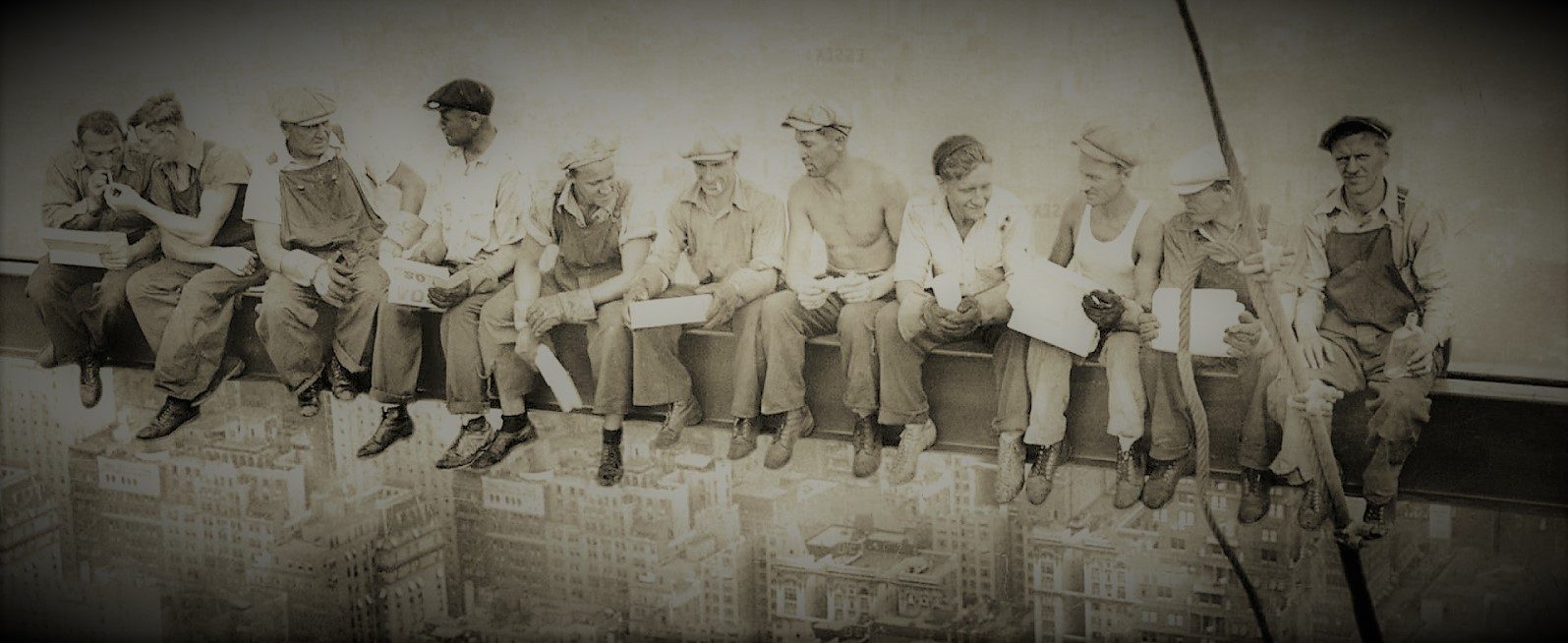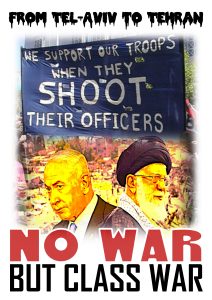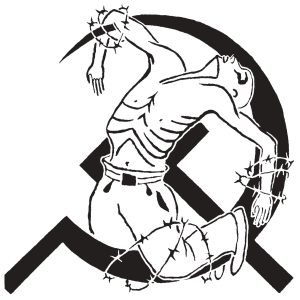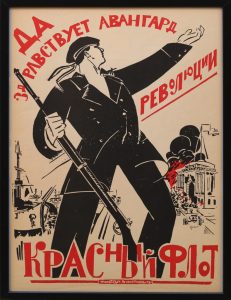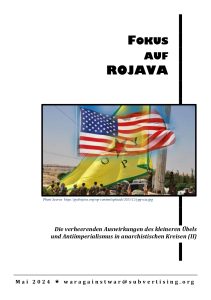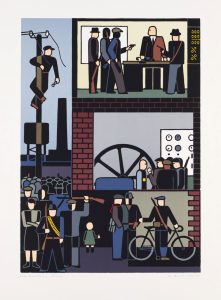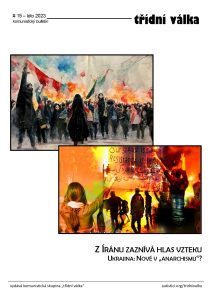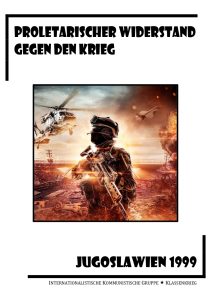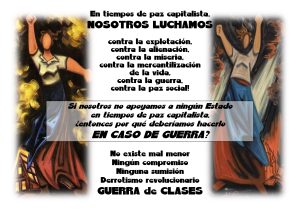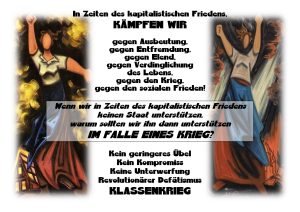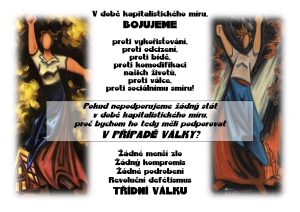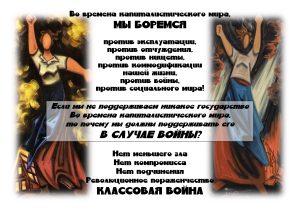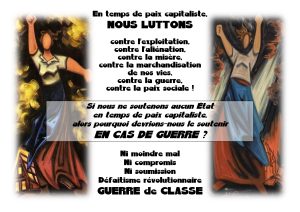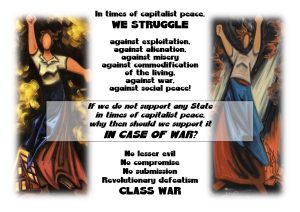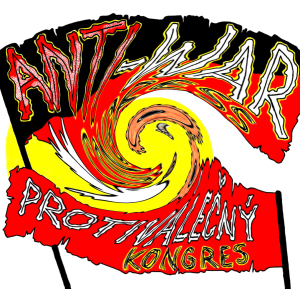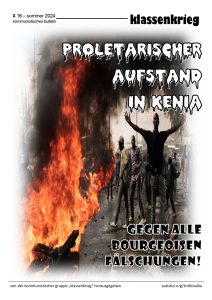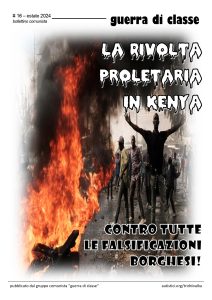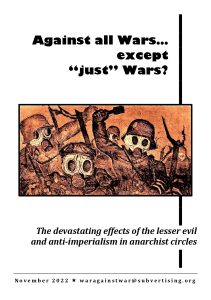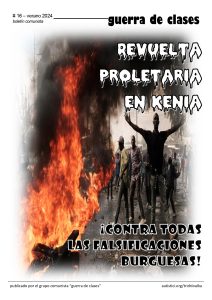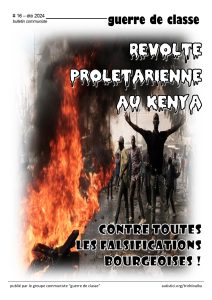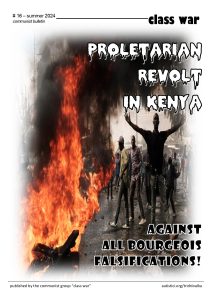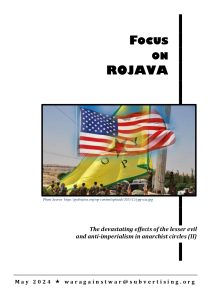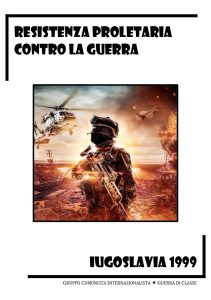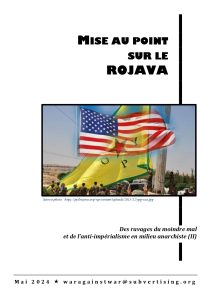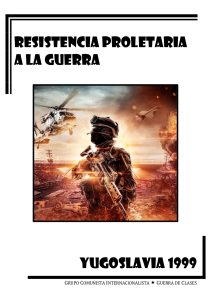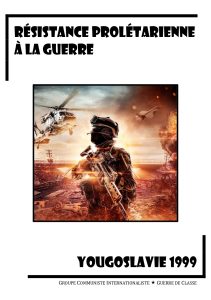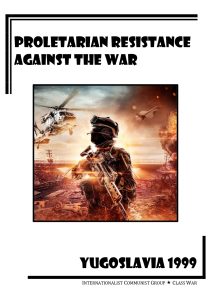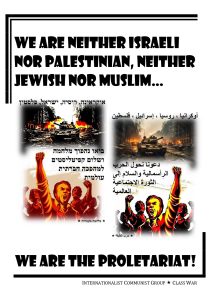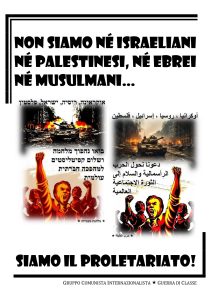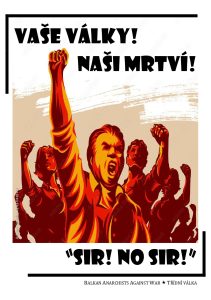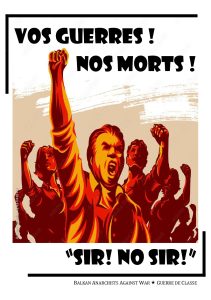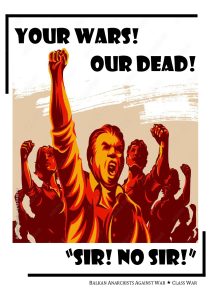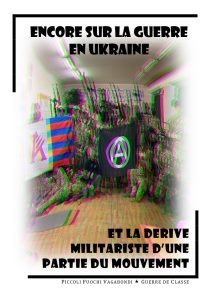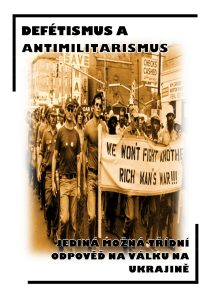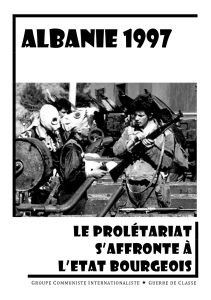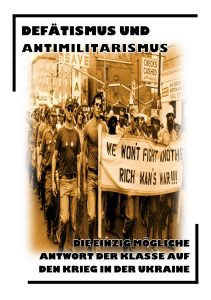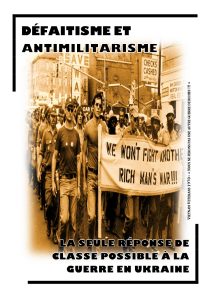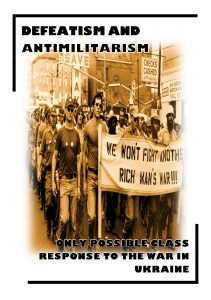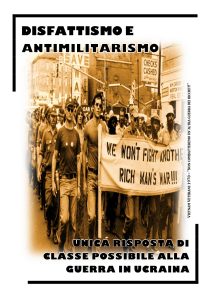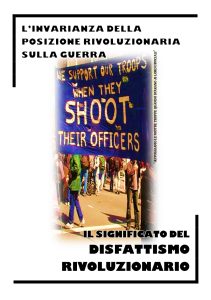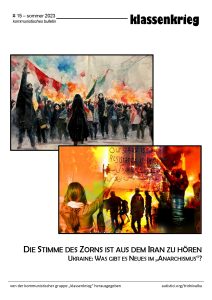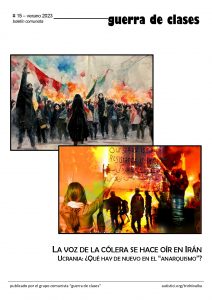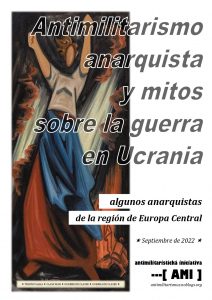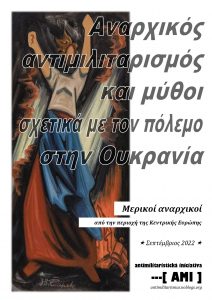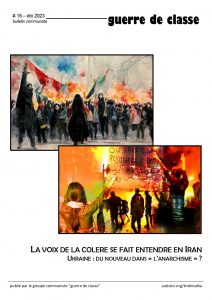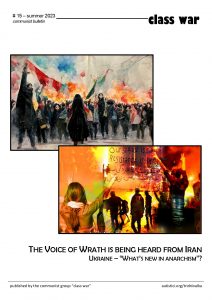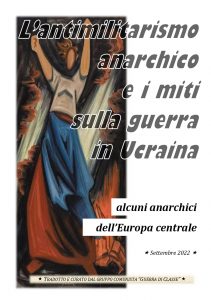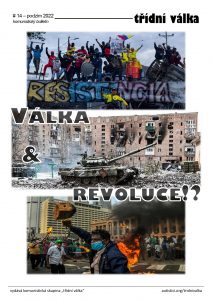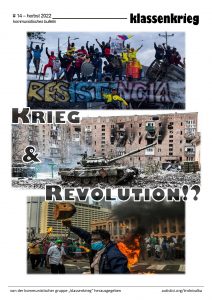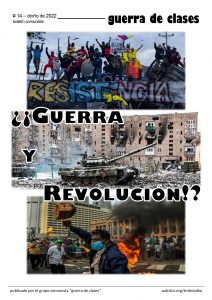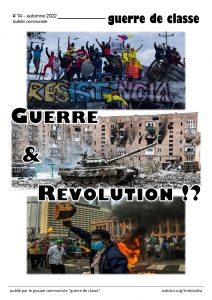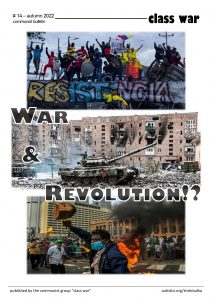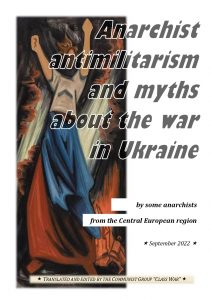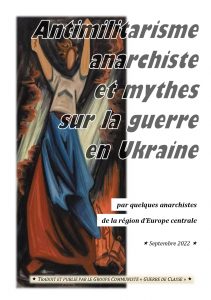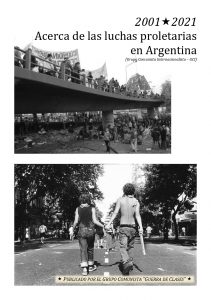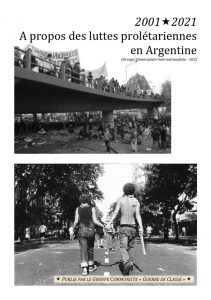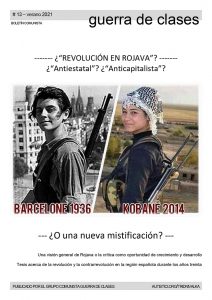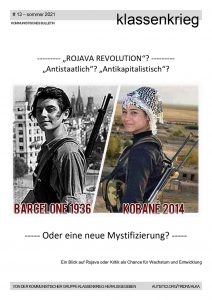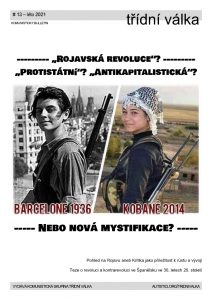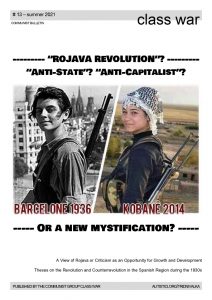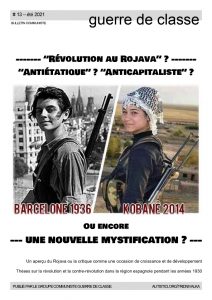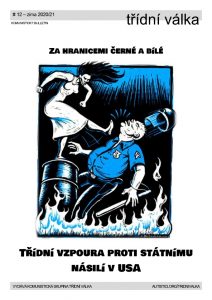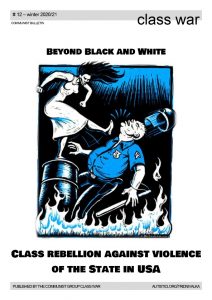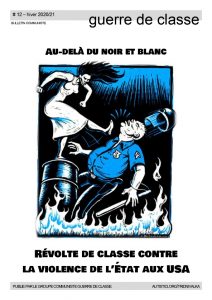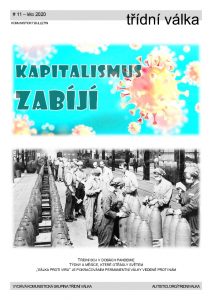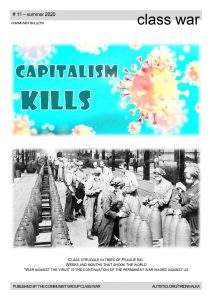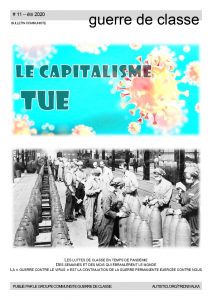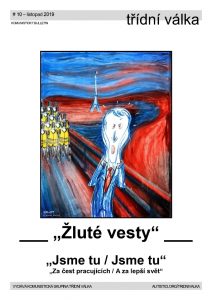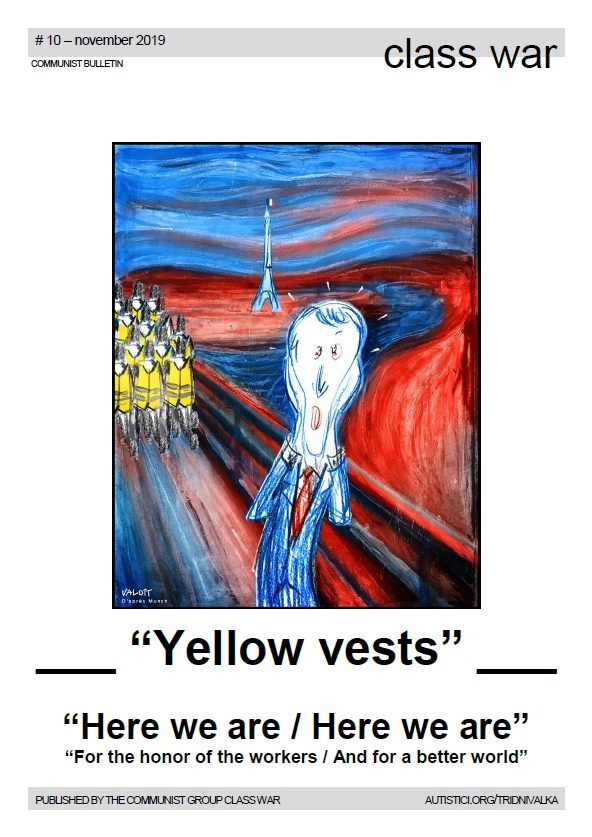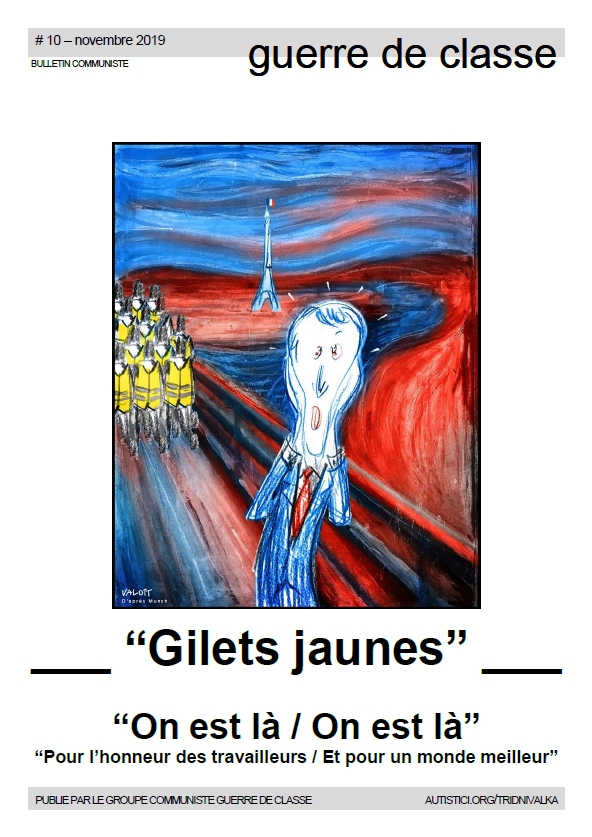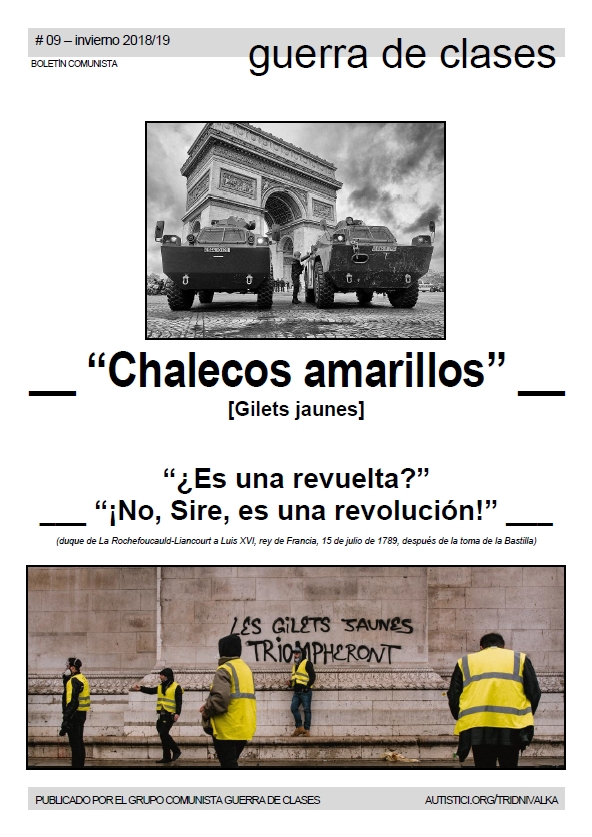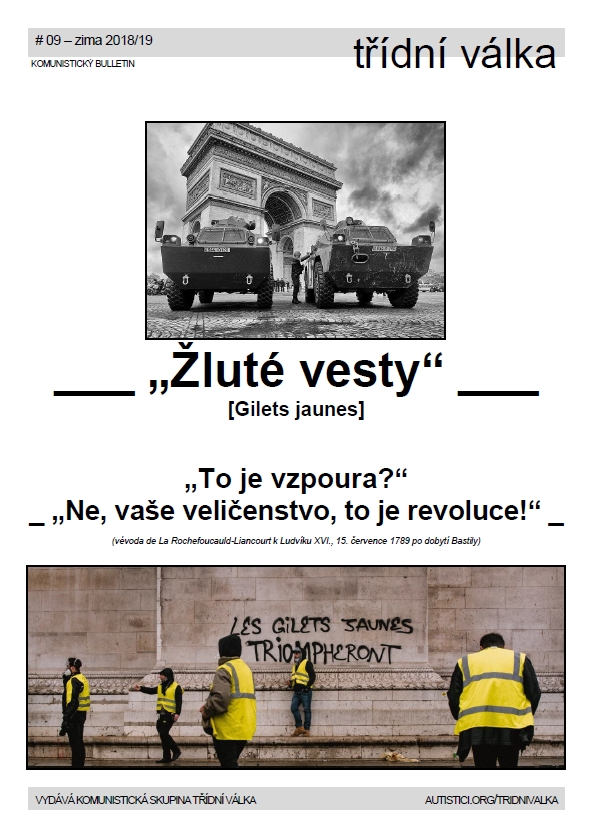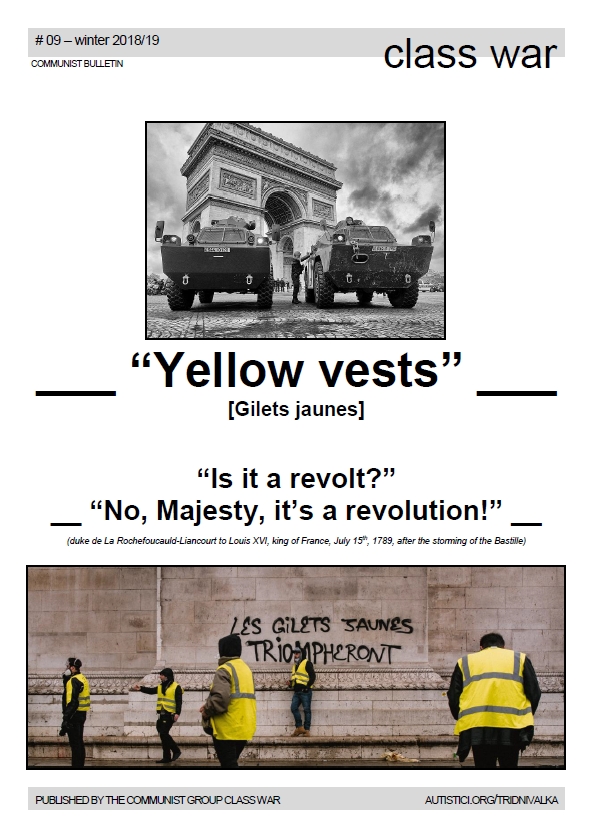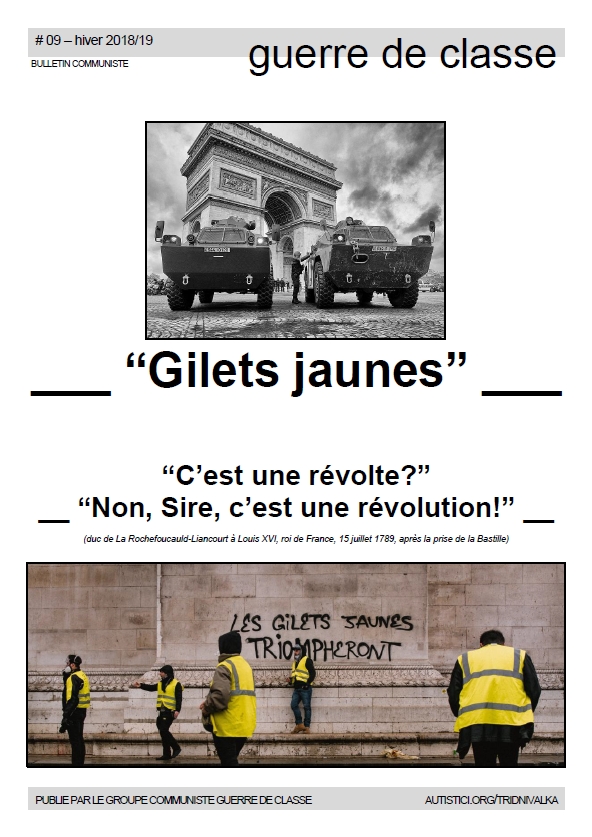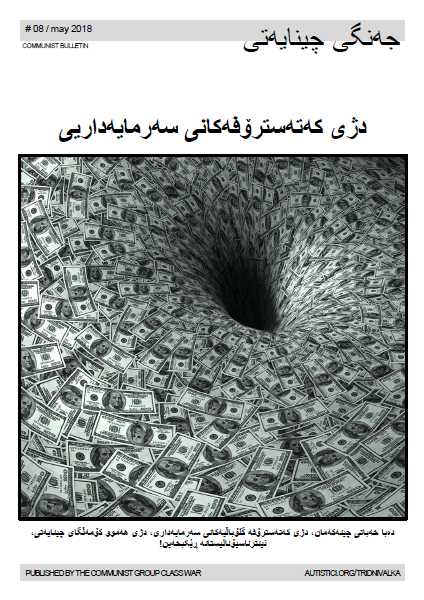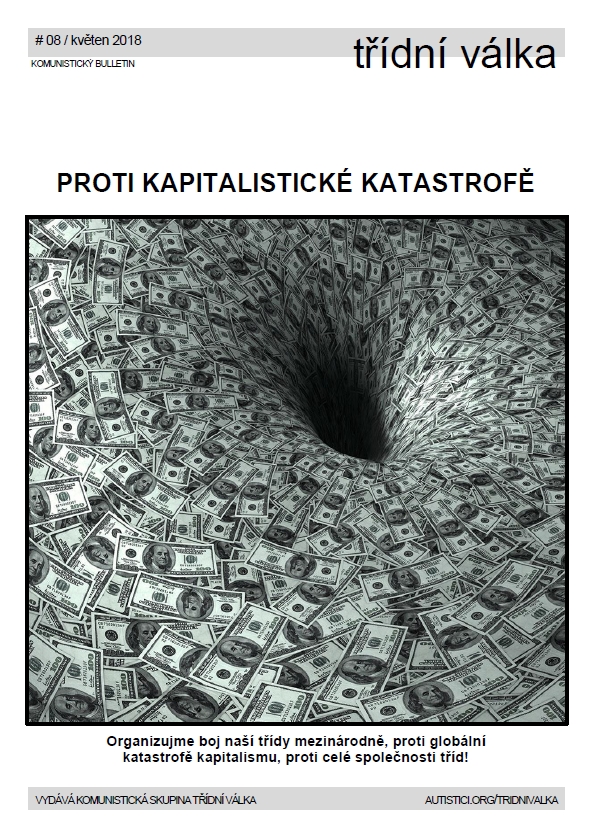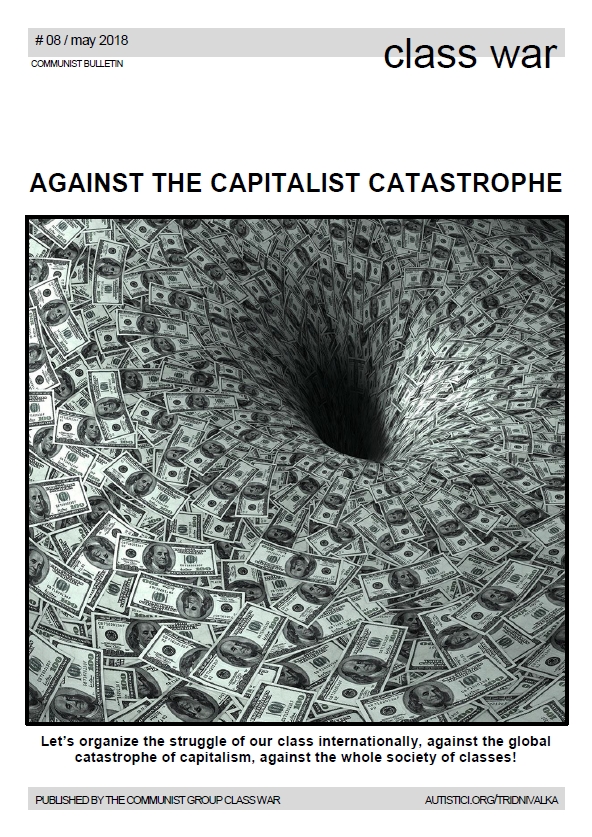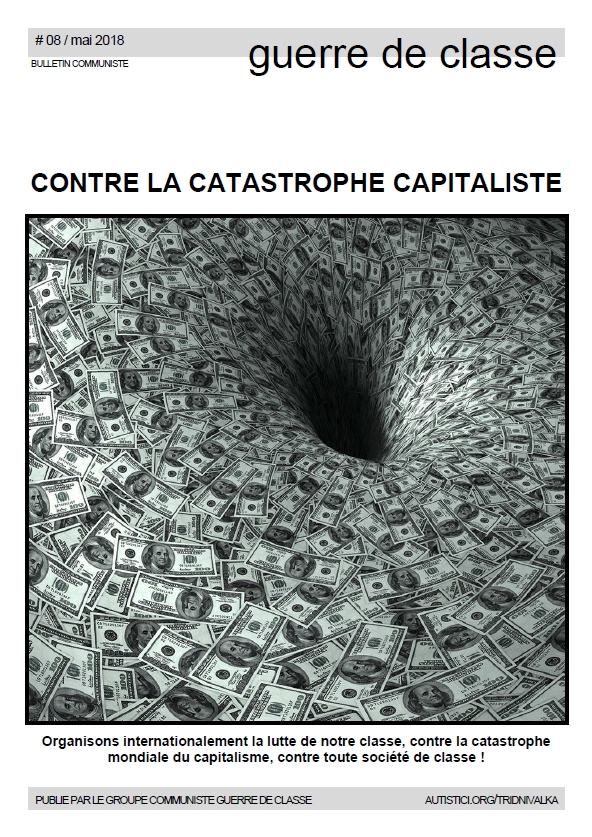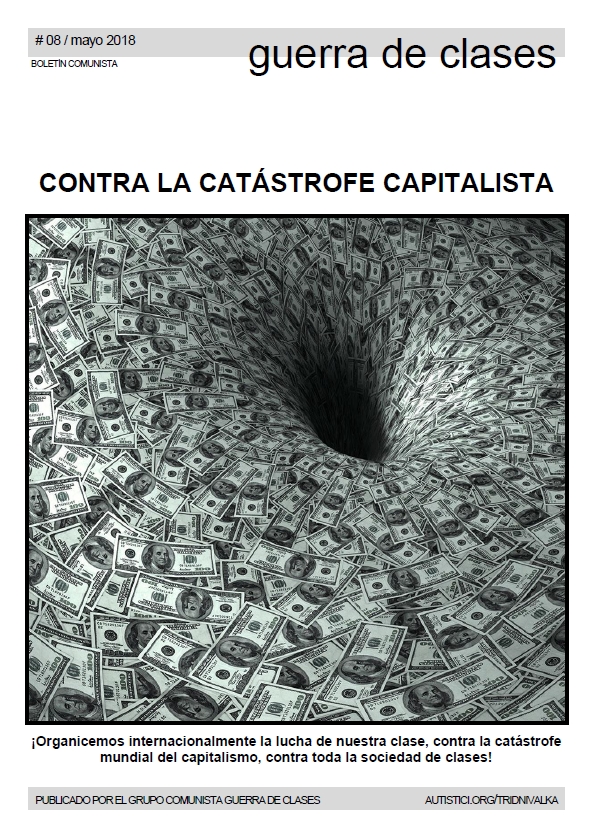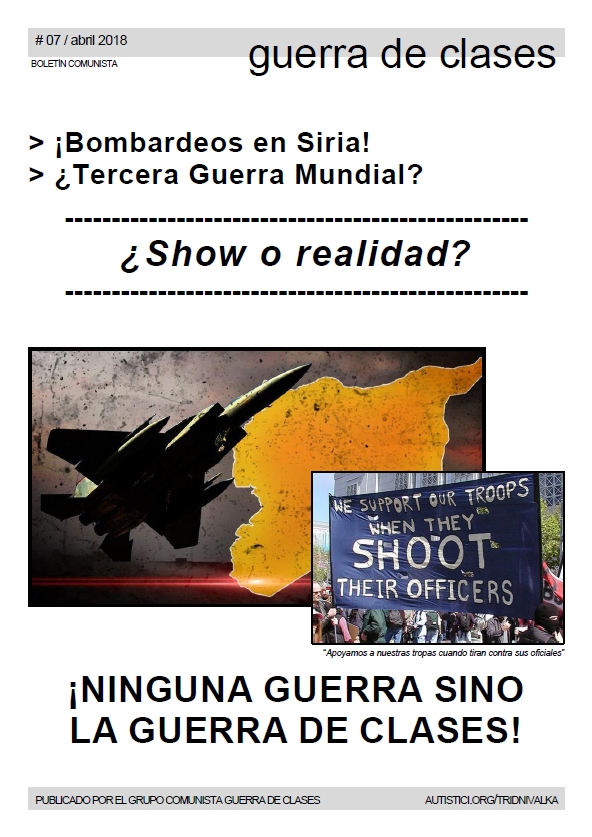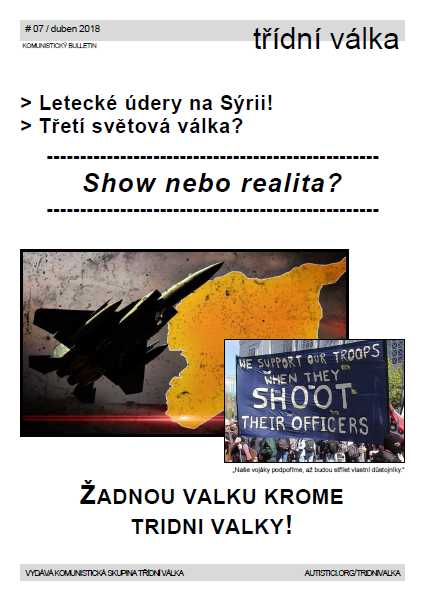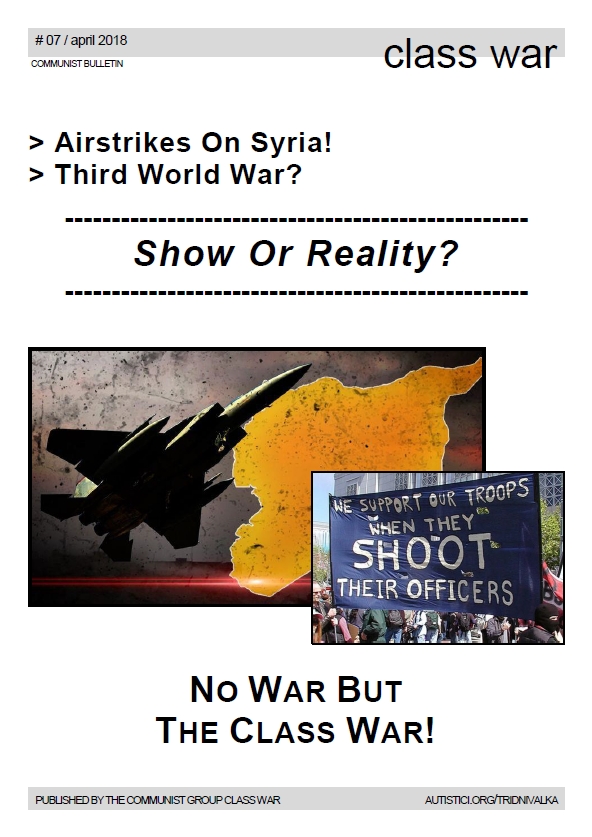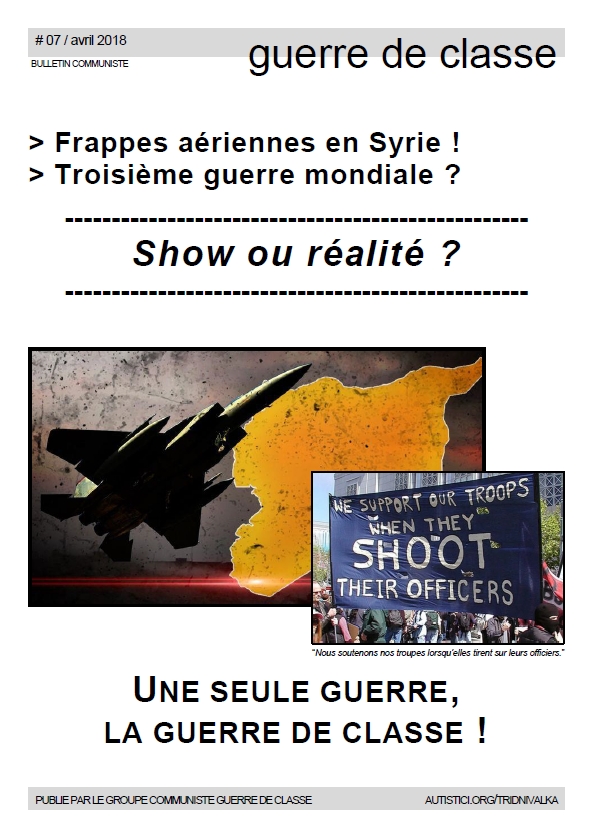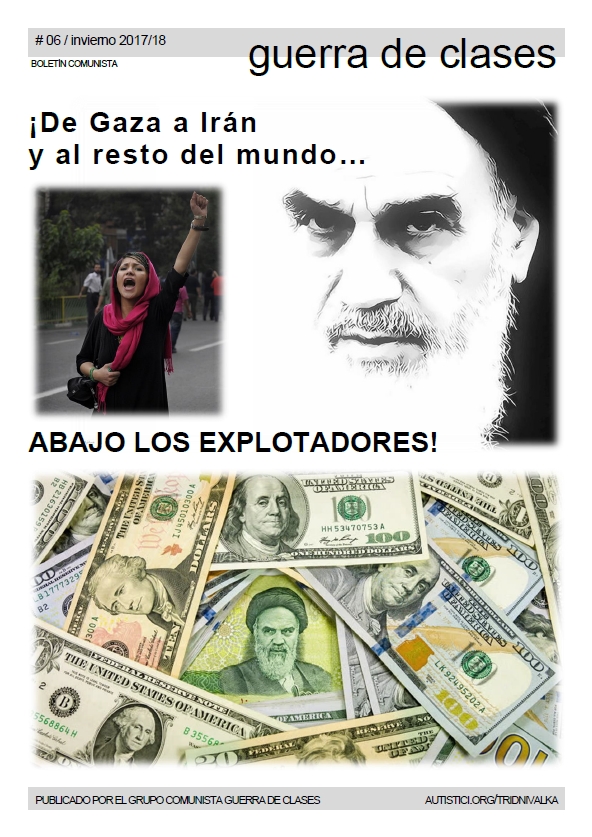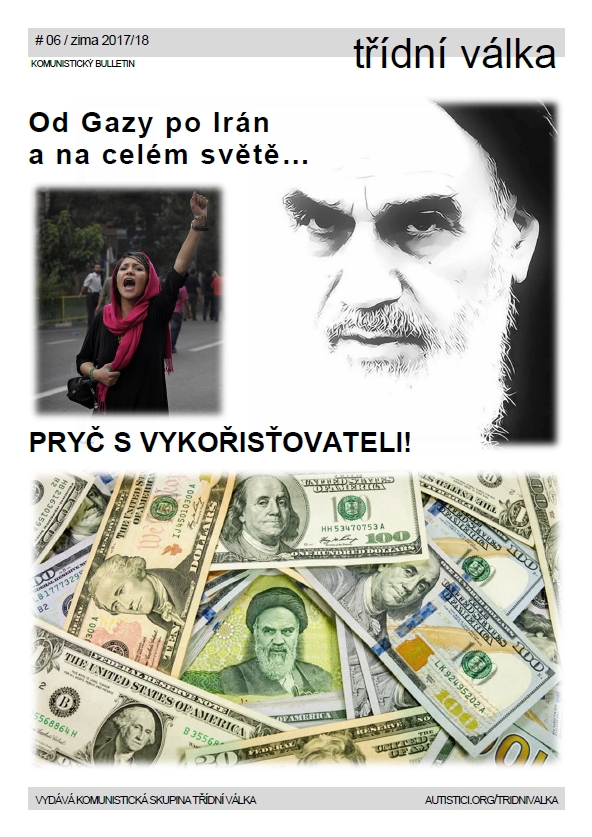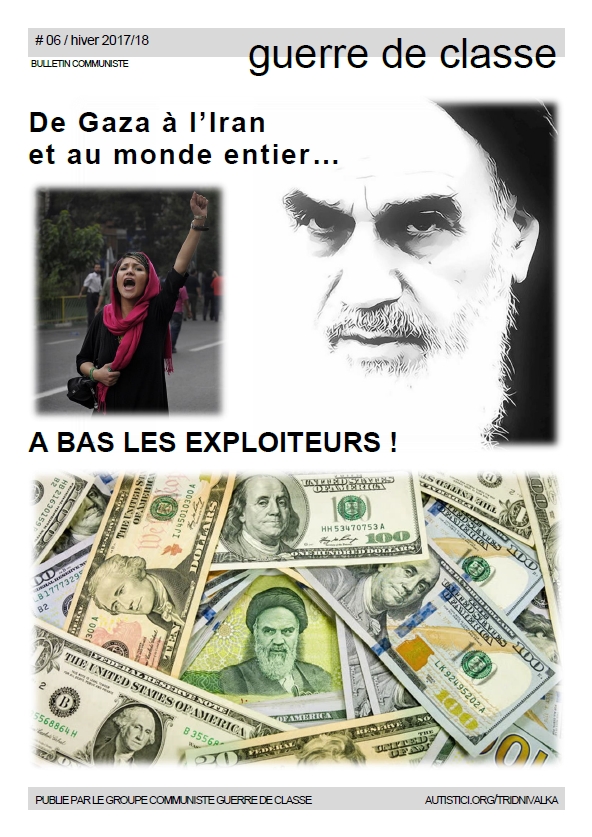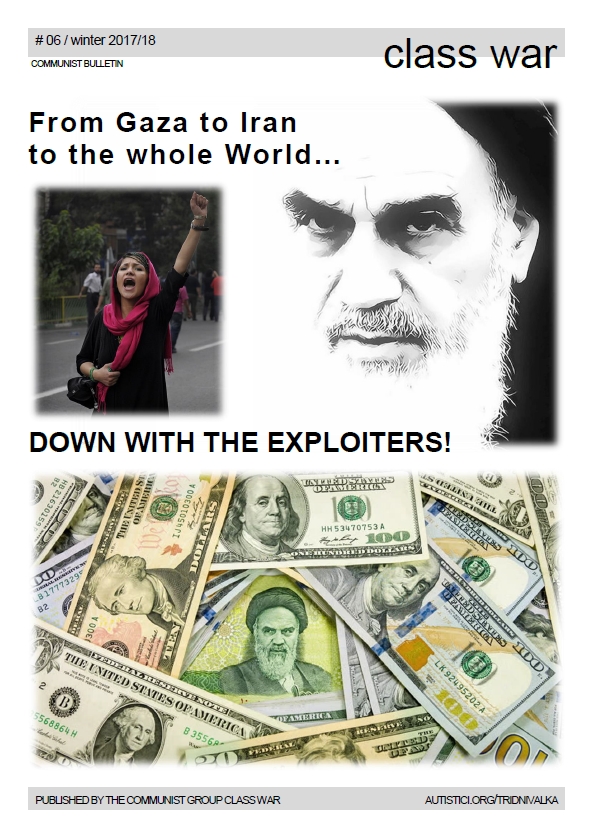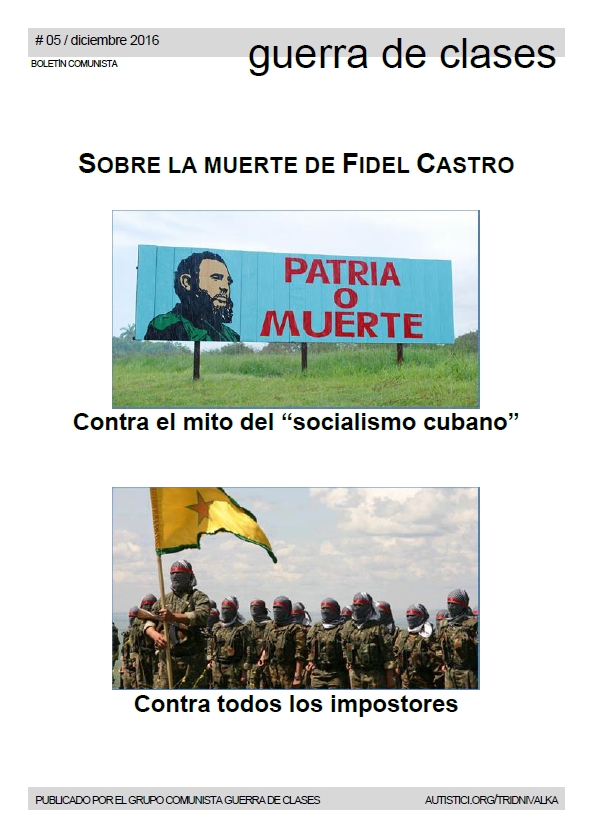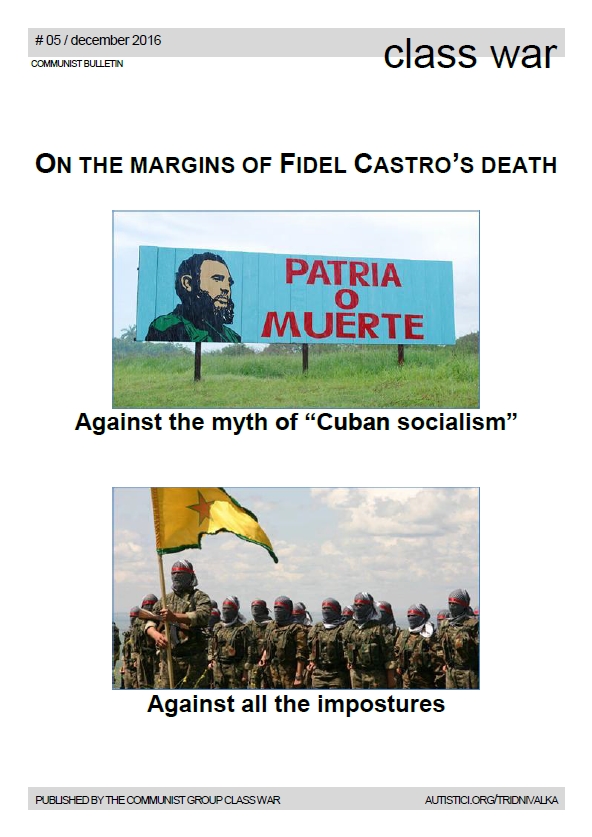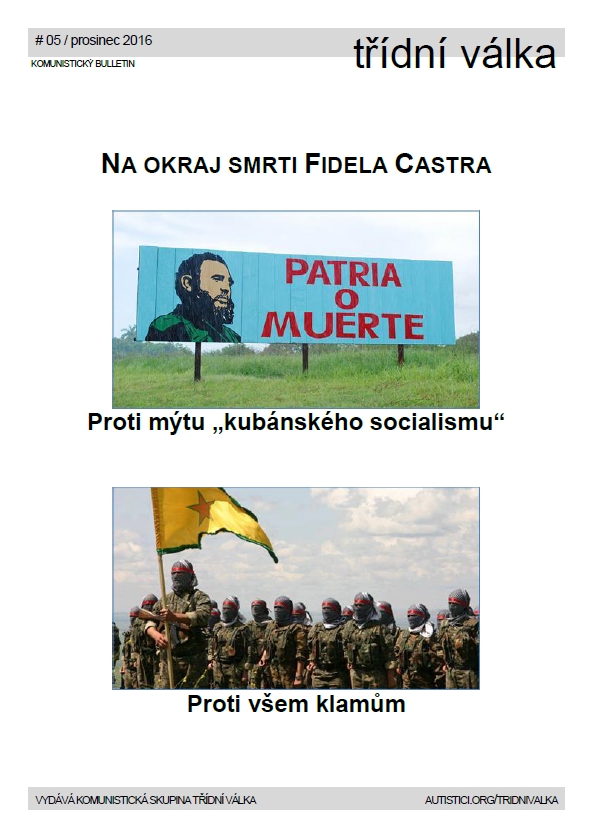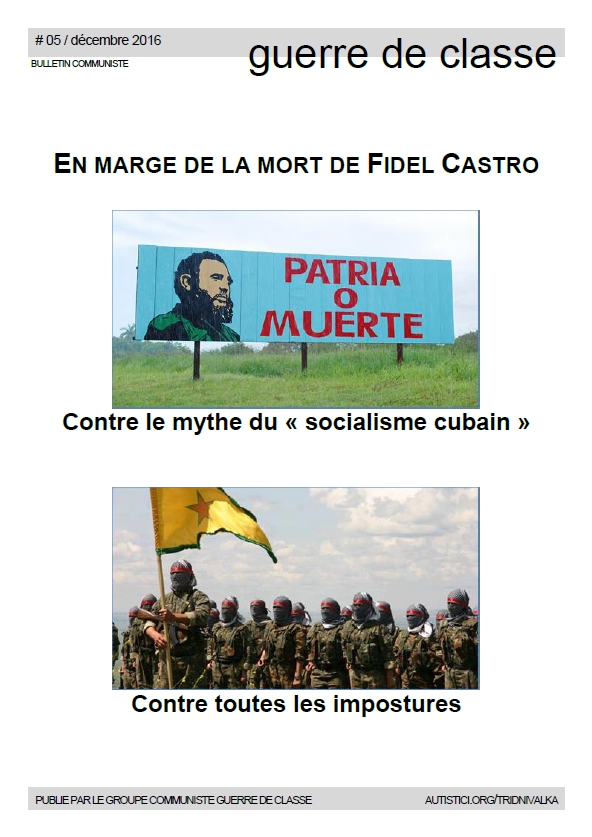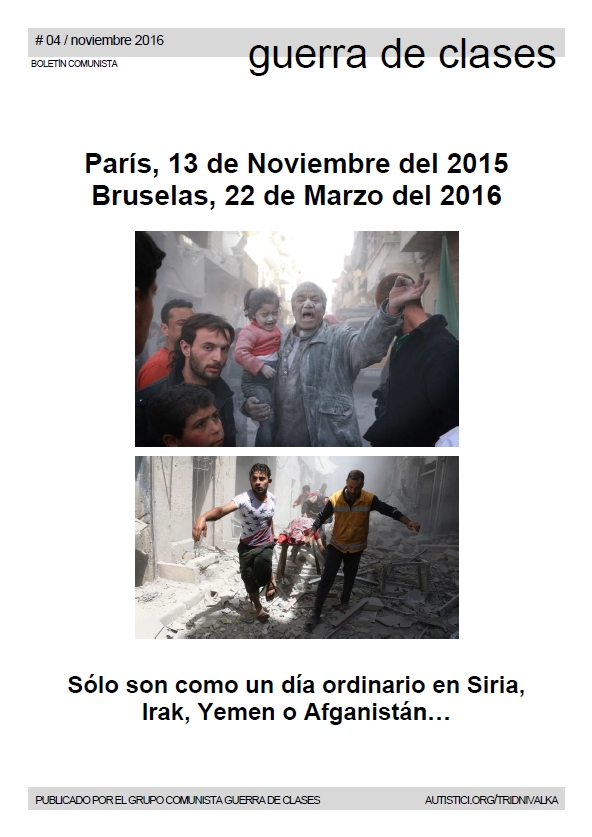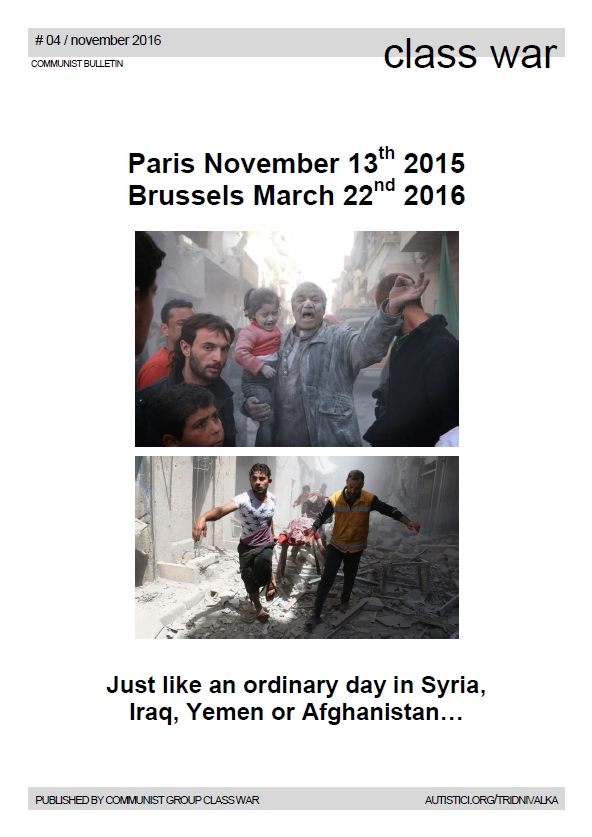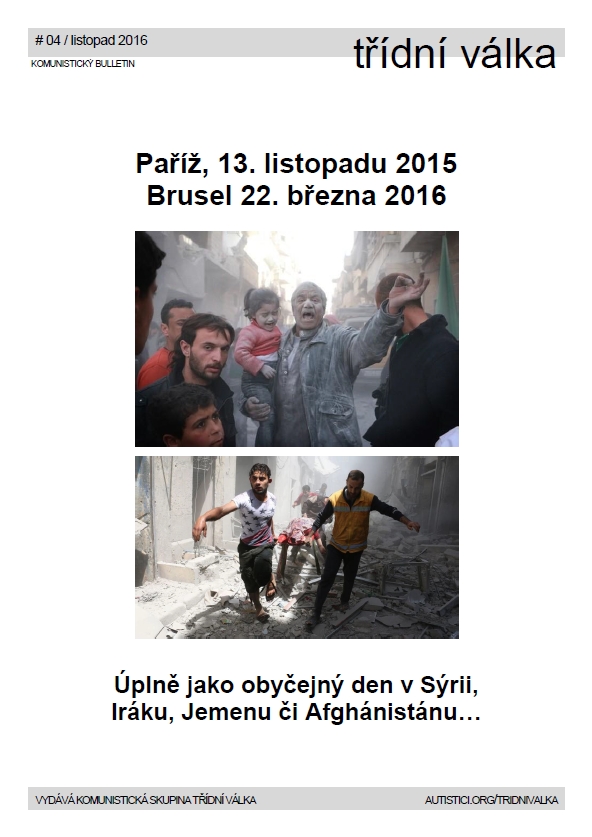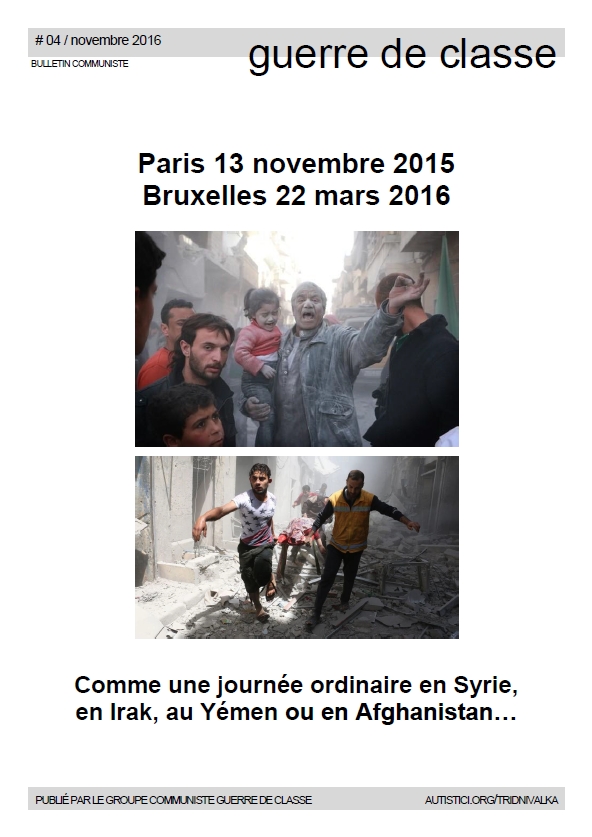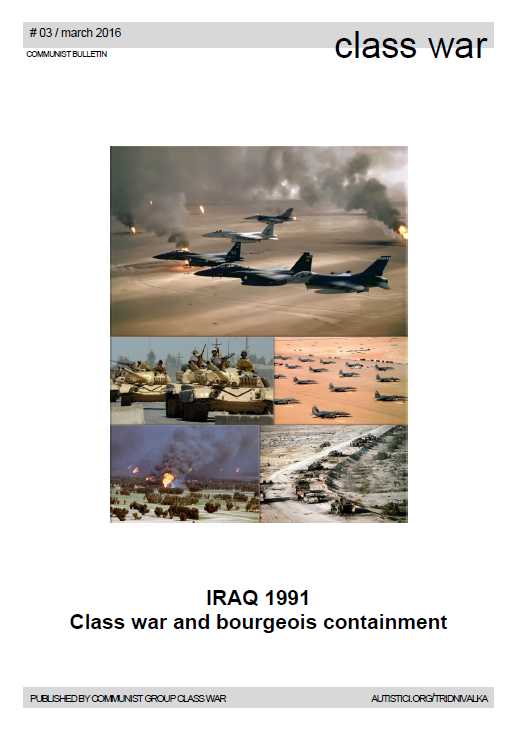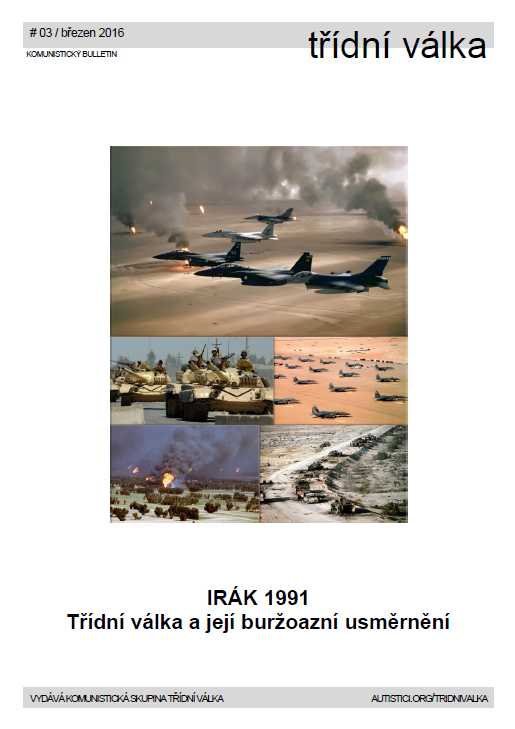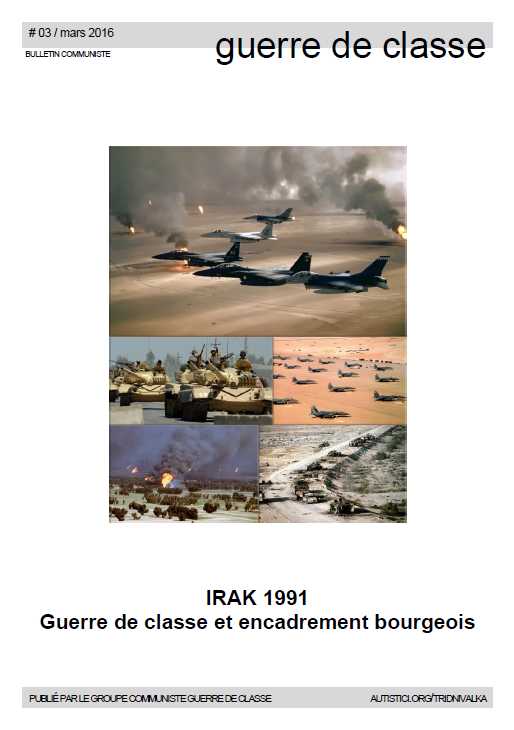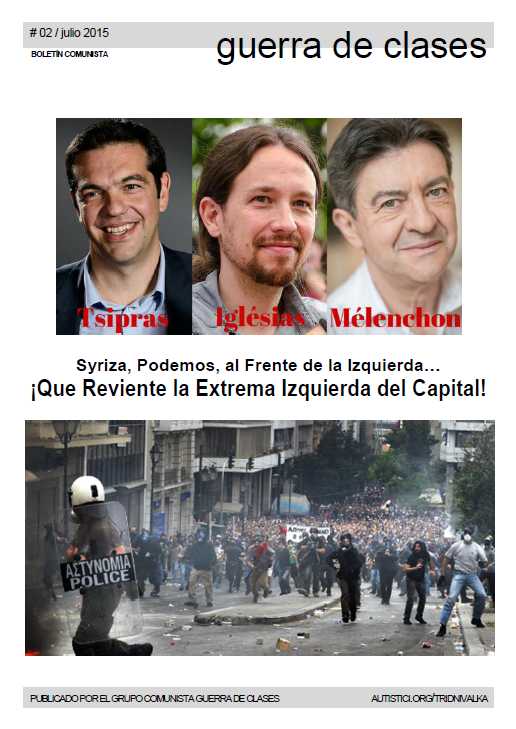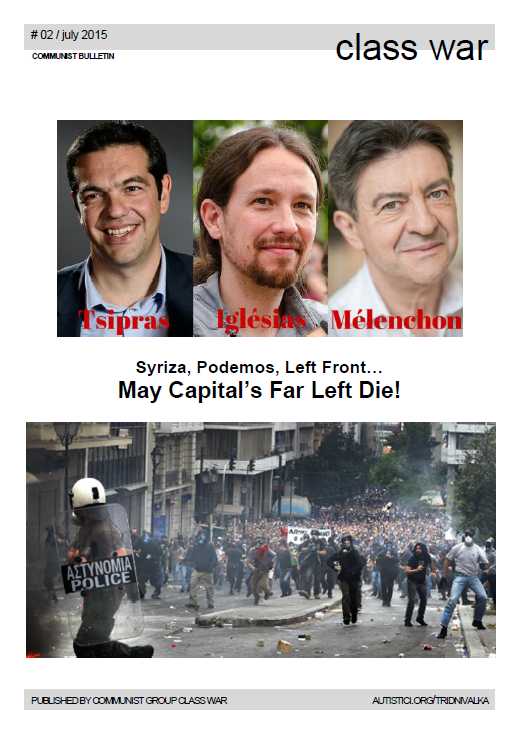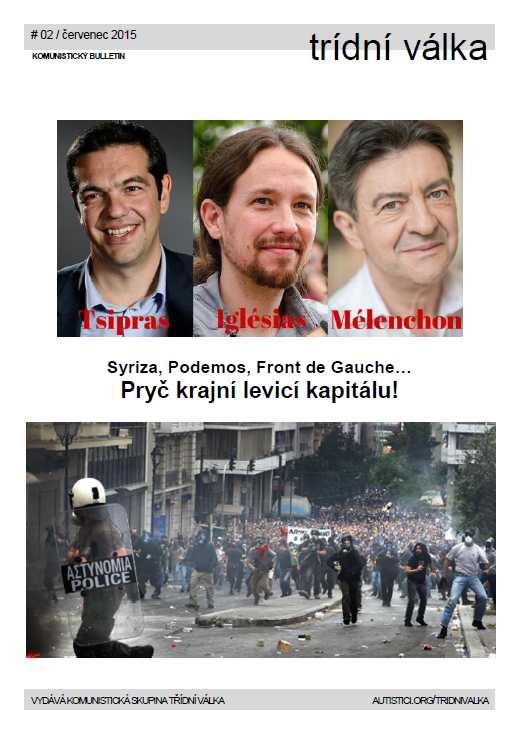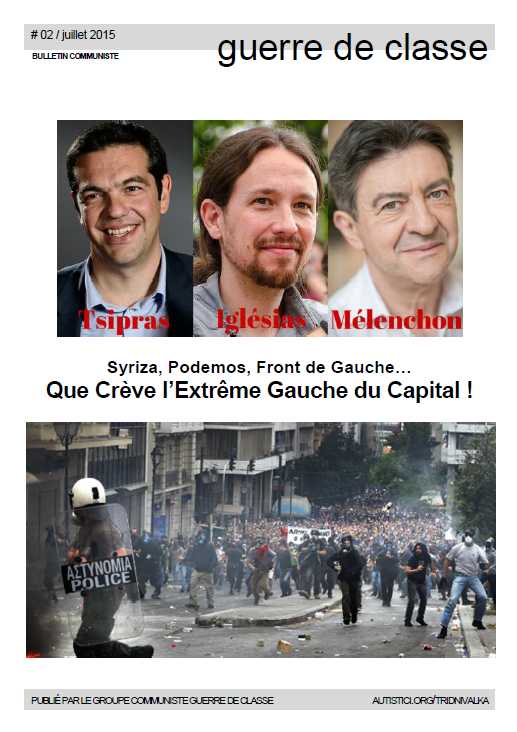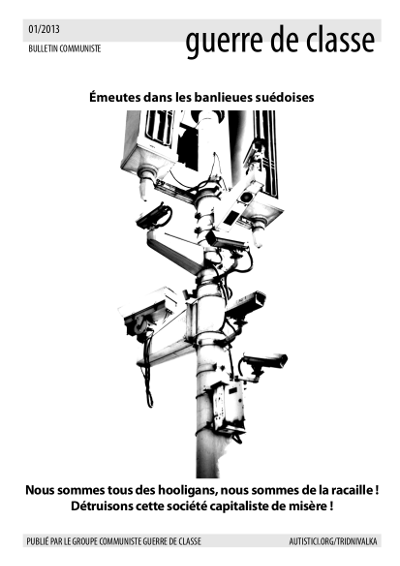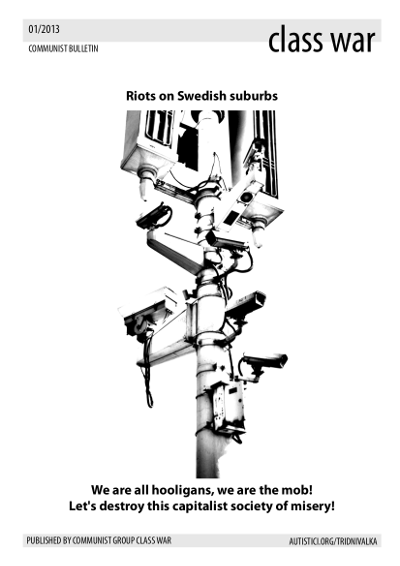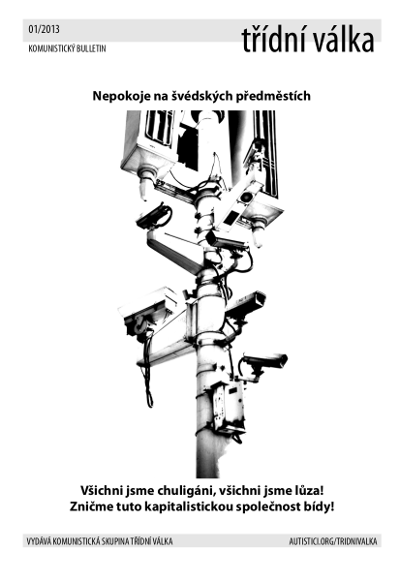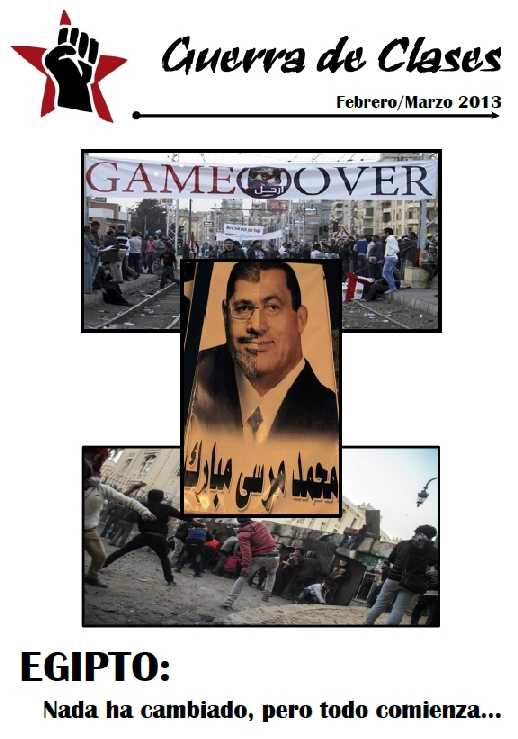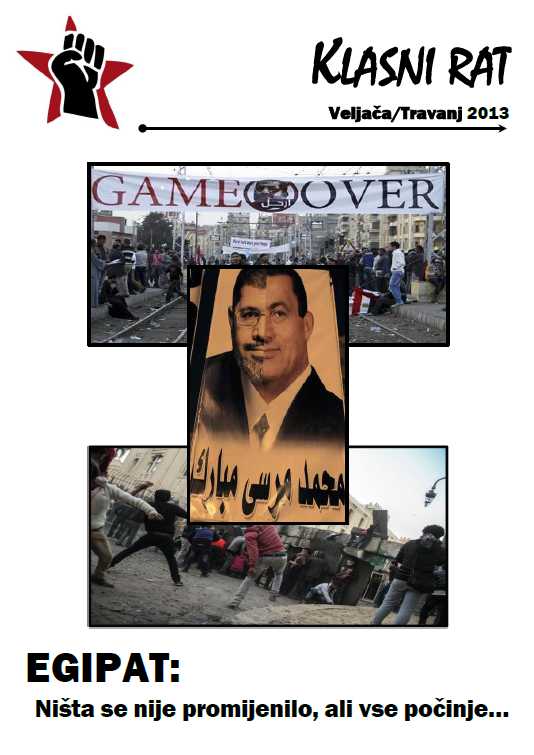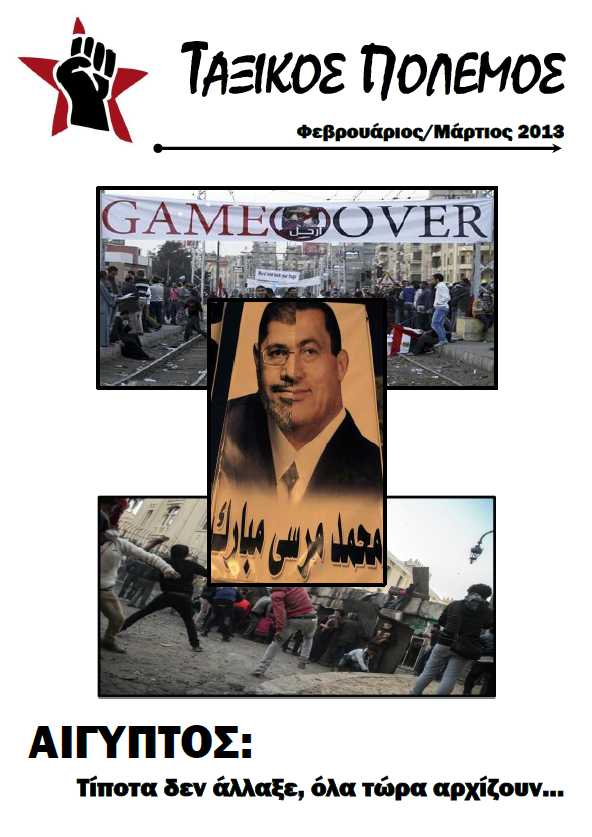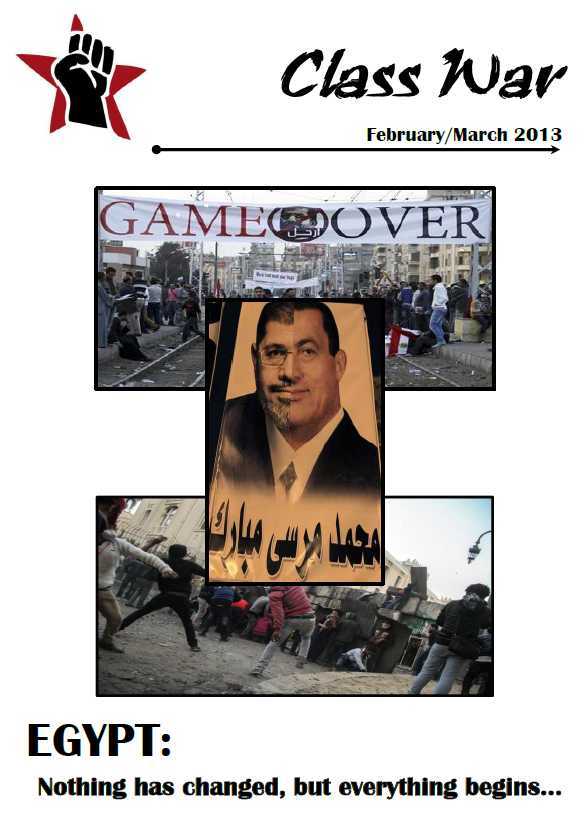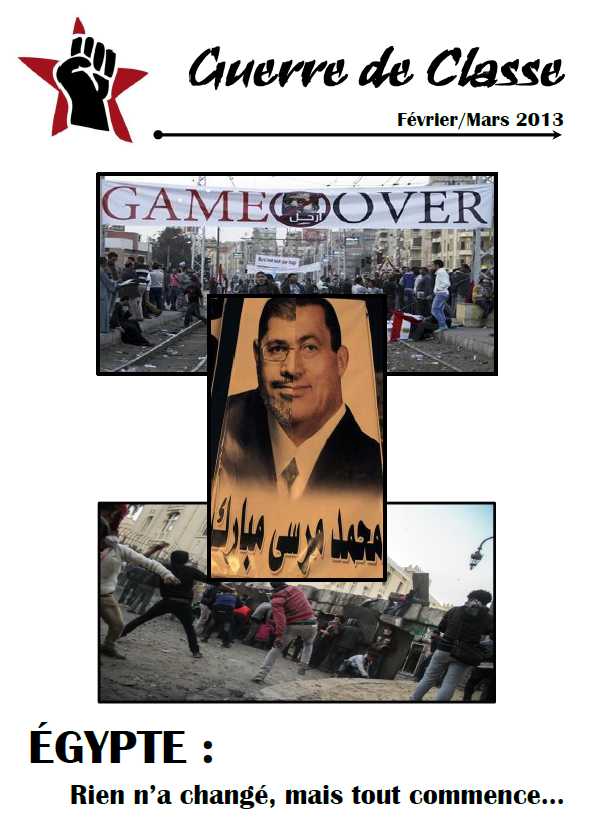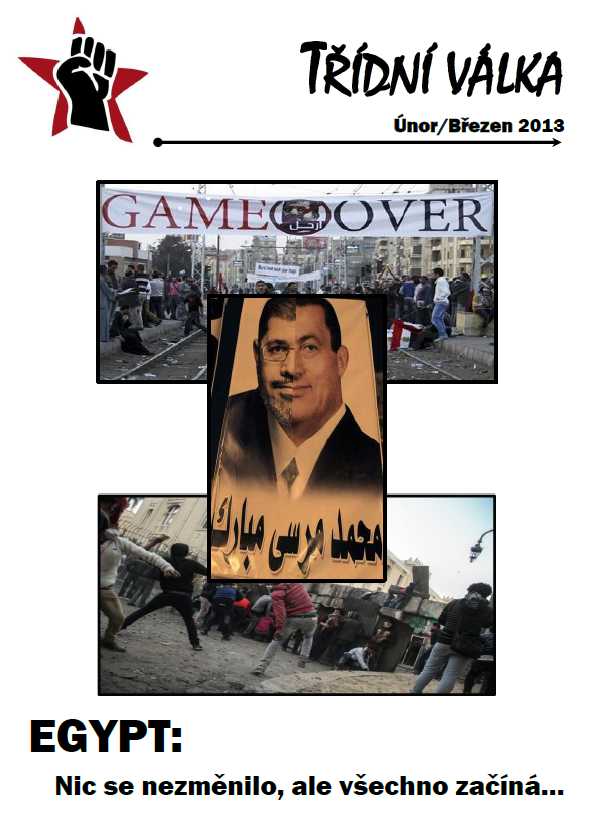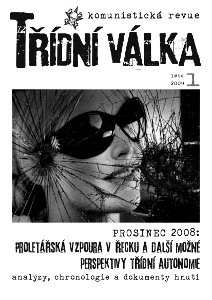/ Español / Français / English / Português / Deutsch /
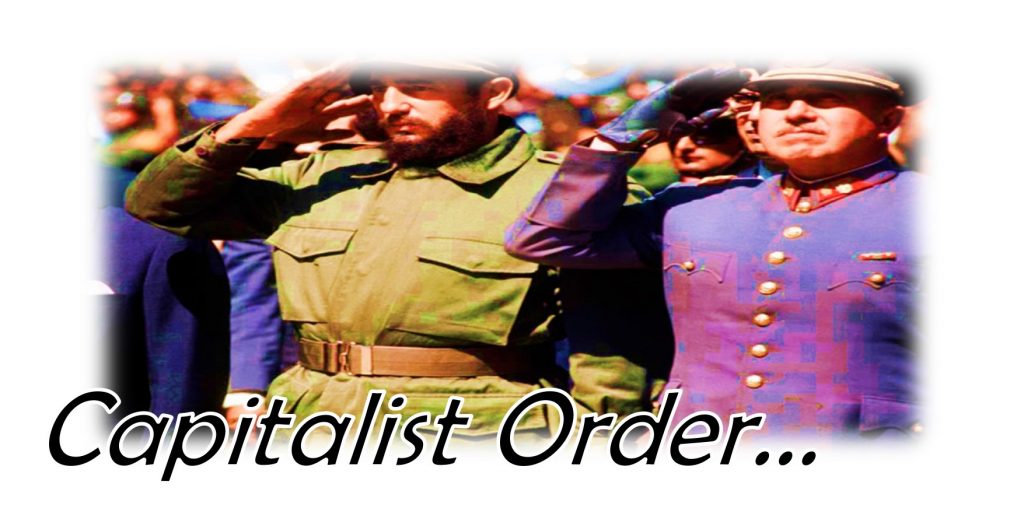
- [Vamos hacia la vida] 50 years after the coup: “Never Again” State and Capital
- [Vamos hacia la vida] Almost half a century after the military coup: we can neither forget nor forgive
- [Pointblank!] Strange defeat: The Chilean revolution, 1973
[Vamos hacia la vida] 50 years after the coup: “Never Again” State and Capital
Source in Spanish: https://hacialavida.noblogs.org/a-50-anos-del-golpe-nunca-mas-estado-y-capital/
“(…) Experience indicates that the workers, by maintaining this movement [of taking over factories], understand the reactionary essence of the bourgeois state, by verifying in practice the attitude of the government towards them. Far from believing in a peaceful transition, they are realizing that the only way to put things right is to put an end to this general staff of the bourgeoisie which is the government.” [1]
More than three thousand people were murdered, among them more than a thousand disappeared. Tens of thousands who went through detention centres and concentration camps, victims of the horror of torture, while an entire territory was ravaged by uniformed terror. Women, men, girls and boys are part of these terrible figures. Why such a level of brutality and ruthlessness? Against whom was all this genocidal violence directed? What was it that they wanted to bury after the bloody coup of September 11, 1973? Was this State terrorism really new?
Today, the narratives from left and right converge on the need to defend democracy, and mutually attribute to each other the responsibility of breaking the constitutional order in those years. Under this premise, they build their discourses of “Never Again”: if they do not want the horror back, there are margins that cannot be exceeded. Which ones? The legality that allows and orders the continuous and ever-growing production and accumulation of capital. The need to defend the democratic order at all costs derives from the need for the reproduction of capital.
Then, the carnage unleashed after the coup was not a mere Machiavellian manoeuvre of “Yankee imperialism” (although the interference of the US government in the coup strategy and subsequent repression is totally proven) nor only the reaction of a frightened Creole bourgeoisie against an anti-imperialist leftist government that would have tried to achieve “social justice” through a peaceful way. It was not the reforms of the bloc headed by Allende that were the reason for the bloody military response, but the activity of the base of a movement which, since the previous decade, was tending towards a massive radicalization and setting in motion autonomous experiences that broke the legal framework and sought to respond by themselves to the demands and needs of their protagonists, with the awareness that social revolution was the road. Faced with these struggles, the local and world capitalist class responded brutally, drowning in blood a process that monopolized the interest of anti-capitalism throughout the globe.
Thus, while the memories of the continuous police and military repression could not be erased from popular memory, from the “Santa María de Iquique School Massacre” of 1907 to the Pampa Irigoin massacre in Puerto Montt in 1969, after its electoral triumph, the reformist coalition reached governability agreements precisely with the party responsible for the murders in the southern city the previous year [2] and tried to court the Armed Forces, encouraging the myth of their democratic tradition, a myth that exploded in its face on the morning of September 11, after the same “comrade President” had incorporated the military into his cabinet in 1972, despite the explicit warnings of the workers’ and peasants’ bases, and repressed the autonomous activity of the Cordones Industriales and other experiences of direct action (in Punta Arenas, on September 4, 1973, the military raided the company “Lanera Austral” in search of alleged weapons, under the Arms Control Law promoted by the government itself, which ended with the murder of the worker Manuel Gonzalez).
The program of the UP was in continuity with the previous Frei government, seeking to modernize capitalism in the region, which caused expected fissures and confrontations between different sectors of the bourgeoisie, but it also had to deal with containing the rise of the proletarian movement which, in Chile as in the whole world, threatened the dominant order and refused to resign itself to the role of spectator to which the whole political spectrum wanted to condemn it. Such resistance to passivity, the impulse to take charge of their own lives that infected a vast sector of the population, is what truly frightened the capitalist class as a whole. World capitalism had to restructure itself to respond to the crisis it had reached in those years, and such reordering had to be imposed with blood and fire, especially when there was the threat of transforming the crisis into a revolutionary solution led by the proletariat itself, which gave its energy and creativity to respond to the reactionary activity of the classic apparatuses of the bourgeoisie and generated its own instances of coordination and organization, surpassing and confronting the bureaucracy of the government parties installed in the trade unions and other organizations.
“We are absolutely convinced that historically the reformism that is sought through dialogue with those who have betrayed time and again, is the quickest road to fascism. And we workers already know what fascism is… We consider not only that we are being led down the road that will lead us to fascism in a dizzying time, but that we have been deprived of the means to defend ourselves.” [3]
“We have organized, comrade, in the population fronts. We have organized in the workers’ fronts, in the unions. We have also organized in the cordons and we still continue with the same refrain, comrade, that ‘it is not the time’, and that there is a legislative power and there is a judicial power. We were asked to organize ourselves, from the beginning, from the population to the highest level, and so far we have organized ourselves, comrade, and we are still saying, the ‘comrade President’ is still asking us to be calm, to continue acting in this way and to continue organizing ourselves, but for what?… The truth of the matter, comrade, is that the people, the workers are getting tired of it, because this is a process and we are fighting against the bureaucracy and within ourselves, within our own defences, within our own unions, within our own power, comrade, like the CUT, the bureaucracy is still there, comrade… Until when?… and the comrades keep asking us to be calm… until when, comrade?… if this is already going too far…” [4]
“That is to say, bourgeois repression triumphs in the midst of the process of unification and autonomy of the working class. Now we understand, at least to some extent, what the coup produced. The constant repression of the UP bureaucracy against the independent struggle of the class, its disbandment after the coup, allows the Armed Forces and the bourgeoisie to continue this task, but under the conditions, now, of the counterrevolution: in a massive manner, with blood and fire. Not even the double quantity of existing weapons would have changed the attitude of the UP. This was not an expression of bravery or cowardice, but of its political and economic objectives. One of the few martyrs of the UP leadership who died in combat, Salvador Allende, clearly established, through his words and actions, the behaviour of a man who led, consequently, the application of the reformist program: he falls defending the principles of honour, of bourgeois democracy, of a constitution, in short, that legally sealed the centenary exploitation of the working class. He dies defending the house of the presidents. But who could have demanded him to fight together with the workers in the industrial cordons, if these were the negation of what he represented? No one. Not even the workers demanded it (…) But those who asked the UP, for three years, to comply with its program, without understanding the depth of the political activity of the working class, were also consistent during the coup. First, they demanded the UP to fight and when, obviously, it did not do so, they backed down to protect their party. They still did not understand that in the state of consciousness and organization of the working class was the only possible answer to the military coup.” [5]
However, today, what should be the main historical lesson of that period still seems elusive: confidence in institutionality, in participation in the State, was at the heart of the defeat of our classes fifty years ago and it was again four years ago when instead of affirming the networks that spread throughout the neighbourhoods after October 18-19, massively paraded to the ballot boxes and the combativity deployed in every city and territory of the Chilean region was again kidnapped and pacified through the ways of democratic domestication, clearing the way for the counterrevolution and sowing uneasiness in the hundreds of thousands of people who gathered in streets and squares for more than three months.
We have not ceased to feel the pain unleashed by state brutality. Not to cease in the struggle for a world radically different from the misery of Capital is to keep alive the memory of those who preceded us. But to end the defeats we must critically examine our past and our present. A look without myth or idolatry. We cannot aspire to imitate a movement born in a given historical context, but we can understand what dynamics developed by that movement proved to be an insurmountable obstacle and try not to reproduce them in the present struggles.
AGAINST THEIR SYSTEM OF DEATH, WE GO TOWARDS LIFE!
[1] Interview with workers of the occupied factory COOTRALACO, Revista “Punto Final” N°90, October 1969, one year before Allende’s election.
[2] The famous “Statute of Constitutional Guarantees” signed with the Christian Democracy-DC.
[3] “Letter from the Cordones Industriales to Salvador Allende,” September 5, 1973.
[4] Intervention by a comrade at a CUT assembly in the aftermath of the UP. Taken from the documentary “La Batalla de Chile, Parte II (El Golpe de Estado)”.
[5] Article “Who we are”, in the newspaper “Correo Proletario” N°2, November 1975.
Translated with www.DeepL.com/Translator (free version)
[Vamos hacia la vida] Almost half a century after the military coup: we can neither forget nor forgive
Source in Spanish: https://hacialavida.noblogs.org/a-casi-medio-siglo-del-golpe-militar-no-olvidamos-ni-perdonamos/
WE DO NOT FORGET the struggle of our class to take back their lives, to take over factories and fields, to discuss new forms of existence without exploitation.
WE DO NOT FORGET the enormous and heterogeneous proletarian activity that has developed since the 1960s and which, contrary to party mythology, has not been the main goal of the struggle on the terrain of elections.
WE DO NOT FORGET the reactionary work of social democracy represented in the UP, which has done everything to demobilize and control the proletariat in order to negotiate with the traditional parties of the bourgeoisie and develop its capitalist project with the label of socialism.
WE DO NOT FORGET that the UP government never had confidence in the revolutionary process. It was Allende who enacted the Arms Control Law, disarming the most militant proletariat so that it was unable to deepen the rupture and resist the counterrevolution.
WE DON’T FORGET the parties that cry for democracy today but don’t hesitate to support military brutality against our class.
WE DO NOT FORGET that democracy and dictatorship are not antithetical states, but different and complementary forms of state rule.
WE DO NOT FORGET the thousands of companions who suffered persecution, torture, murder and disappearances.
WE DON’T FORGET that the conditions of misery against which our class rose up were produced by the same social dynamics that produce today’s misery: capitalist social relations that produce and feed physical and psychological alienation, that condemn the vast majority of proletarianized humanity to hunger, disease, isolation and death, that necessitate and sustain sexual hierarchization and all the violence that goes with it.
WE DO NOT FORGET, because it is our history. But above all: WE DO NOT FORGET, because many of these elements are repeated in our convulsive time.
The mythology of the capitalist left sees in the 70-73 period a government that, supported by a broad mass of the population, wanted to achieve socialism peacefully (a pacifism that had no qualms about repressing workers, storming occupied factories, or imprisoning, torturing, and murdering revolutionaries), with great heroes that it remembers today with sweet nostalgia, highlighting especially the figure of Allende.
But the struggles of the proletariat in our region were in line with the revolutionary wave that shook the whole planet in those years, and the capitalist class countered them with a variety of responses. Between the crushing of reformism (which did not exclude violent repression) and the bloody massacre of the military, there is no break, but a continuity in the repressive work of the state.
Today, after an impressive revolt, the Party of Order, as a bloc, agrees on a “peace treaty” whose explicit goal is to extinguish the fire ignited by the anger and creativity of those who are dominated.
Major parts of the left goes along anyway, pretending to “roll over” a process that was invented for the very purpose to channel and oppress.
Let’s not encourage more defeat and deception. Let us go further. Let us embrace life.
OUR MEMORY IS A WEAPON OF THE FUTURE
English translation: https://enoughisenough14.org/2021/09/22/almost-half-a-century-after-the-military-coup-we-can-neither-forget-nor-forgive-chile/
[Pointblank!] Strange defeat: The Chilean revolution, 1973
Source: https://libcom.org/article/strange-defeat-chilean-revolution-1973-pointblank/
I
In the spectacular arena of current events recognised as “news,” the funeral of social democracy in Chile has been orchestrated as high drama by those who understand the rise and fall of governments most intuitively: other specialists of power. The last scenes in the Chilean script have been written in various political camps in accordance with the requirements of particular ideologies. Some have come to bury Allende, some to praise him. Still others claim an ex post facto knowledge of his errors. Whatever the sentiments expressed, these obituaries have been written long in advance. The organisers of “public opinion” can only react reflexively and with a characteristic distortion of the events themselves.
As the respective blocs of world opinion “choose sides,” the Chilean tragedy is reproduced as farce on an international scale; the class struggles in Chile are dissimulated as a pseudo-conflict between rival ideologies. In the discussions of ideology nothing will be heard from those for whom the “socialism” of the Allende regime was supposedly intended: the Chilean workers and peasants. Their silence has been ensured not only by those who machine-gunned them in their factories, fields, and houses, but by those who claimed (and continue to claim) to represent their “interests.” In spite of a thousand misrepresentations, however, the forces that were involved in the “Chilean experiment” have not yet played themselves out. Their real content will be established only when the forms of their interpretation have been demystified.
Above all else, Chile has fascinated the so-called Left in every country. And in documenting the atrocities of the current junta, each party and sect attempts to conceal the stupidities of its previous analyses. From the bureaucrats-in-power in Moscow, Peking, and Havana to the bureaucrats-in-exile of the Trotskyist movements, a liturgical chorus of leftist pretenders offer their post-mortem assessments of Chile, with conclusions as predictable as their rhetoric. The differences between them are only ones of hierarchical nuance; they share a Leninist terminology which expresses 50 years of counterrevolution throughout the world.
The Stalinist parties of the West and the “socialist” states quite rightly view the defeat of Allende as their defeat: he was one of their own – a man of State. With the false logic which is an essential mechanism of their power, those who know so much about State and (the defeat of) Revolution decry the overthrow of a constitutional, bourgeois regime. For their part, the “left” importers of Trotskyism and Maoism can only lament the absence of a “vanguard party” – the deus ex machina of senile Bolshevism – in Chile. Those who have inherited the defeat of revolutionary Kronstadt and Shanghai know whereof they speak: the Leninist project requires the absolute imposition of a deformed “class consciousness” (the consciousness of a bureaucratic ruling class) upon those who in their designs are only “the masses.”
The dimensions of the “Chilean Revolution” lie outside the constraints of any particular doctrine. While the “anti-imperialists” of the world denounce – from a safe distance – the all-too-convenient bogeyman of the CIA, the real reasons for the defeat of the Chilean proletariat must be sought elsewhere. Allende the martyr was the same Allende who disarmed the workers’ militias of Santiago and Valparaiso in the weeks before the coup and left them defenceless before the military whose officers were already in his cabinet. These actions cannot simply be explained as “class-collaboration” or as a “sellout.” The conditions for the strange defeat of the Unidad Popular were prepared long in advance. The social contradictions that emerged in the streets and fields of Chile during August and September were not simply divisions between “Left” and “Right” but involved a contradiction between the Chilean proletariat and the politicians of all parties, including those that posed as the most “revolutionary.” In an “underdeveloped” country, a highly developed class struggle had arisen which threatened the positions of all those who wished to maintain underdevelopment, whether economically through continued imperialist domination, or politically through the retardation of an authentic proletarian power in Chile.
II
Everywhere, the expansion of capital creates its apparent opposite in the form of nationalist movements which seek to appropriate the means of production “on behalf” of the exploited and thereby appropriate social and political power for themselves. Imperialism’s extraction of surplus has its political and social consequences, not only in enforced poverty of those who must become its workers, but in the secondary role allotted to the local bourgeoisie, which is incapable of establishing its complete hegemony over society. It is precisely this vacuum which the “national liberation” movements seek to occupy, thereby assuming the managerial role unfulfilled by the dependent bourgeoisie. This process has taken many forms – from the religious xenophobia of Khadafi to the bureaucratic religion of Mao – but in each instance, the marching orders of “anti-imperialism” are the same, and those who give them are in identical positions of command.
The imperialist distortion of the Chilean economy provided an opening for a popular movement which aimed at establishing a national capital base. However, Chile’s relatively advanced economic status precluded the kind of bureaucratic development which has come to power by force of arms in other areas of the “Third World” (a term which has been used to conceal the real class divisions in those countries). The fact that the “progressive” Unidad Popular was able to achieve an electoral victory as a reformist coalition was a reflection of the peculiar social structure in Chile, which was in many respects similar to those in advanced capitalist countries. At the same time, capitalist industrialisation created the conditions for the possible supersession of this bureaucratic alternative in the form of a rural and urban proletariat which emerged as the most important class and one with revolutionary aspirations. In Chile, both Christian and Social Democrats were to prove to be the opponents of any radical solution to existing problems.
Until the advent of the UP coalition, the contradictions on the Chilean Left between a radical base of workers and peasants and its so-called political “representatives” remained to a large extent latent antagonisms. The leftist parties were able to organise a popular movement solely on the basis of the foreign threat posed by American capital. The Communists and Socialists were able to sustain their image as authentic nationalists under Christian Democratic rule because Frei’s “Chileanisation” program (which included a policy of agrarian reform that Allende was later to consciously emulate) was explicitly connected to the American-sponsored “Alliance for Progress.” The official Left was able to construct its own alliance within Chile in opposing, not reformism itself, but a reformism with external ties. Even given its moderate nature, the opposition program of the Chilean Left was only adopted after the militant strike activity of the 1960s – organised independently of the parties – threatened the existence of the Frei regime.
The succeeding UP was to move into a space opened up by the radical actions of the Chilean workers and peasants; it imposed itself as an institutionalised representation of proletarian causes to the extent that it was able to recuperate them. In spite of the extremely radical nature of many of the earlier strike actions (which included factory occupations and the workers’ administration of several industrial plants, most notably at COOTRALACO), the practice of the Chilean proletariat lacked a corresponding theoretical or organisational expression, and this failure to affirm its autonomy left it open to the manipulations of the politicians. Despite this, the battle between reform and revolution was far from having been decided.
III
The election of the freemason Allende, although it in no way meant that the workers and peasants had established their own power, nonetheless intensified the class struggle occurring throughout Chile. Contrary to the UP’s assertions that the working class had won a major “victory,” both the proletariat and its enemies were to continue their battle outside conventional parliamentary channels. Although Allende constantly assured the workers that they were both engaged in a “common struggle,” he revealed the true nature of his socialism-by-decree at the beginning of his tenure when he signed the Estatuto, which formally guaranteed that he would faithfully respect the bourgeois constitution. Having come to power on the basis of a “radical” program, the UP was to come into conflict with a growing revolutionary current at its base. When the Chilean proletariat showed that it was prepared to take the slogans of the UP program literally – slogans that amounted only to empty rhetoric and unfulfilled promises on the part of the bureaucratic coalition – and put them into practice, the contradictions between the content and form of the Chilean revolution became apparent. The workers and peasants of Chile were beginning to speak and act for themselves.
For all his “Marxism,” Allende was never more than an administrator of state intervention in a capitalist economy. Allende’s étatisme – a form of state capitalism that has accompanied the rise of all administrators of underdevelopment – was itself not more than a quantitative extension of Christian Democratic policies. In nationalising the copper mines and other industrial sectors, Allende continued the centralisation initiated under the control of the Chilean state apparatus – a centralisation initiated by the Left’s “arch-enemy” Frei. Allende, in fact, was forced into nationalising certain concerns because they had been spontaneously occupied by their workers. In forestalling the workers’ self-management of industry by defusing these occupations, Allende actively opposed the establishment of socialist relations of production. As a result of his actions, the Chilean workers only exchanged one set of bosses for another: the government bureaucracy, instead of Kennecott or Anaconda, directed their alienated labour. This change in appearances could not conceal the fact that Chilean capitalism was perpetuating itself. From the profits extracted by multinational corporations to the “five-year plans” of international Stalinism, the accumulation of capital is an accumulation always made at the expense of the proletariat.
That governments and social revolutions have nothing in common was demonstrated in rural areas as well. In contrast to the bureaucratic administration of “agrarian reform” which was inherited and continued by the Allende regime, the spontaneous armed seizures of large estates offered a revolutionary answer to the “land question.” For all the efforts of the CORA (the central agrarian reform agency) to prevent these expropriations through the mediation of “peasant cooperatives” (asentamientos), the peasants’ direct action went beyond such illusory forms of “participation.” Many of the fundo takeovers were legitimised by the government only after pressure from the campesinos made it impossible to do otherwise. Recognising that such actions called into question its own authority as well as that of the landowners, the UP never missed an opportunity to denounce “indiscriminate” expropriations and to call for a “slow-down.”
The autonomous actions of the rural and urban proletariat formed the basis for the development of a movement significantly to the left of the Allende government. At the same time, this movement provided yet another occasion for a political representation to impose itself on the realities of the Chilean class struggle. This role was assumed by the Guevarist militants of the MIR [Left Revolutionary Movement] and its rural counterpart, the MCR, both of which succeeded in recuperating many of the radical achievements of the workers and peasants. The MIRistas’ slogan of “armed struggle” and their obligatory refusal of electoral politics were merely pro forma gestures: shortly after the 1970 election, an elite corps of the ex-urban guerrillas of MIR became Allende’s personally selected palace guard. The ties that bound the MIR-MCR to the UP went beyond purely tactical considerations – both had common interests to defend. Despite MIR’s revolutionary posturing, it acted according to the UP’s bureaucratic exigencies: whenever the government was in trouble, the adjutants of MIR would rally its militants around the UP banner. If the MIR failed to be the “vanguard” of the Chilean proletariat, it was not because it wasn’t enough of a vanguard, but because its strategy was resisted by those whom it tried to manipulate.
IV
Right-wing activity in Chile increased, not in response to any governmental decrees, but because of the direct threat posed by the independence of the proletariat. In the face of mounting economic difficulties, the UP could only talk of “rightist sabotage” and the obstinacy of a “workers’ aristocracy.” For all the impotent denunciations of the government, these “difficulties” were social problems that could only be solved in a radical way through the establishment of a revolutionary power in Chile. In spite of its claim to “defend the rights of the workers,” the Allende government proved to be an impotent bystander in the class struggle unfolding outside of formal political structures. It was the workers and peasants themselves who took the initiative against the reaction and in so doing created new and radical forms of social organisation, forms which expressed a highly-developed class consciousness. After the bosses’ strike in October 1972, the workers did not wait for the UP to intervene, but actively occupied the factories and started up production on their own, without state or trade union “assistance.” Cordones industriales, which controlled and coordinated the distribution of products and organised armed defence against the employers, were formed in the factory complexes. Unlike the “popular assemblies” promised by the UP, which only existed on paper, the cordones were set up by the workers themselves. In their structure and functioning, these committees – along with the rural consejos – were the first manifestations of a councilist tendency and as such constituted the most important contribution to the development of a revolutionary situation in Chile.
A similar situation existed in the neighbourhoods, where the inefficient, government-controlled “supply boards” (JAPs) were bypassed in the proclamations of “self-governing neighbourhoods” and the organisation of commandos comunales by the residents. Despite their infiltration by the fidelistas of MIR, these armed expropriations of social space formed the point of departure for an authentic proletarian power. For the first time, people who had previously been excluded from participation in social life were able to make decisions concerning the most basic realities of their daily lives. The men, women, and youth of the poblaciones discovered that revolution was not a matter for the ballot box; whatever the quarters were called – New Havana, Heroic Vietnam – what went on inside them had nothing to do with the alienated landscapes of their namesakes.
Although the achievements that were realised by popular initiative were considerable, a third force capable of posing a revolutionary alternative to the government and the reactionaries never fully emerged. The workers and peasants failed to extend their conquests to the point of replacing the Allende regime with their own power. Their supposed “ally,” the MIR, used its talk of opposing burocratismo with the “armed masses” as a mask for its own intrigues. In its Leninist scheme, the cordones were seen as “forms of struggle” that would prepare the way for future, less “restricted” organisational models, whose leadership would be supplied by the MIR, no doubt.
For all its concern over the right-wing plots that menaced its existence, the government restrained the workers from taking positive action to resolve the class struggle in Chile. In so doing, the initiative passed from the workers’ hands into the government’s, and in allowing itself to be out-manoeuvred, the Chilean proletariat paved the way for its future defeat. In response to Allende’s pleas after the abortive coup of June 29, the workers occupied additional factories, only to close ranks behind the forces that would disarm them a month later. These occupations remained defined by the UP and its intermediaries in the national trade union, the CUT, who kept the workers isolated from each other by barricading them inside the factories. In such a situation, the proletariat was powerless to carry on any independent struggle, and once the Weapons Act had been signed, its fate was sealed. Like the Spanish Republicans who denied arms to the anarchist militias on the Aragon front, Allende was not prepared to tolerate the existence of an armed proletarian force outside his own regime. All the conspiracies of the Right would not have lasted a day if the Chilean workers and peasants had been armed and had organised their own militias. Although the MIR protested against the entry of the military into the government, they, like their predecessors in Uruguay, the Tupamaros, only talked of arming the workers and had little to do with the resistance that took place. The workers’ slogan, “A disarmed people is a defeated people” was to find its bitter truth in the slaughter of workers and peasants that followed the military coup.
Allende was overthrown, not because of his reforms, but because he was unable to control the revolutionary movement which spontaneously developed at the base of the UP. The junta which installed itself in his position clearly perceived the threat of revolution and set about eliminating it with all the means at its disposal. It was no accident that the strongest resistance to the dictatorship occurred in those areas where the power of the workers had advanced the furthest. In the Sumar Textile Plant and in Concepción, for instance, the junta was forced to liquidate this power by means of air strikes. As a result of Allende’s policies, the military was able to have a free hand in finishing what it had begun under the UP government: Allende was as responsible as Pinochet for the mass murders of workers and peasants in Santiago, Valparaiso, Antofogasta and the provinces. Perhaps the most revealing of all the ironies inherent in the UP’s downfall is that while many of Allende’s supporters did not survive the coup, many of his reforms did. So little meaning was left to political categories that the junta’s new Foreign Minister could describe himself as a “socialist.”
V
Radical movements are underdeveloped to the extent that they respect alienation and surrender their power to external forces instead of creating it for themselves. In Chile, the revolutionaries hastened the day of their own Thermidor by letting “representatives” speak and act on their behalf: although parliamentary authority had been effectively replaced by the cordones, the workers did not go beyond these conditions of dual power and abolish the bourgeois State and the parties that maintained it. If the future struggles in Chile are to advance, the enemies within the workers’ movement must be overcome practically; the councilist tendencies in the factories, neighbourhoods, and fields will be everything or nothing. All the vanguard parties that will continue to pass themselves off as the “workers’ leadership” – whether they be the MIR, a clandestine CP, or any other underground splinter groups – can only repeat the betrayals of the past. Ideological imperialism must be confronted as radically as economic imperialism has been expropriated; the workers and peasants can depend only on themselves to advance beyond what the cordones industriales have already accomplished.
Comparisons between the Chilean experience and the 1936 Spanish Revolution are already being made, and not only here – one finds strange words coming from Trotskyists in praise of workers’ militias which fought against all forms of hierarchy. While it is true that a radical third force did emerge in Chile, it did so only tentatively. Unlike the Spanish proletariat, the Chilean revolutionaries never created an entirely new kind of society on the basis of councilist organisation, and the Chilean Revolution will only succeed if these forms (cordones, comandos) are capable of establishing their social hegemony. The obstacles to their development are similar to those that were confronted in Spain: the Spanish councils and militias faced two enemies in the form of Fascism and the Republican government, while the Chilean workers face international capitalism and the manipulators of social-democracy and Leninism.
From the favelas of Brazil to the labour camps of Cuba, […] [the proletariat of the Caribbean], the proletariat of Latin America has maintained a continual offensive against all those who seek to maintain present conditions.
In its struggle, the proletariat is faced with various caricatures of revolution which masquerade as its allies. These travesties have in turn encountered a false movement of so-called “ultra-left” opposition. Thus, the ex-fascist Peron prepares to construct a corporate state in Argentina, this time in a leftist guise, while the Trotskyist commandos of the ERP denounce him for not being “revolutionary” enough, and the ex-guerrillero Castro berates all those who fail to meet the standards of “communist” discipline. History will not fail to dissolve the power of these idiots.
A conspiracy of tradition – with agents on both the Left and the Right – ensures that existing reality is always presented in terms of false alternatives. The only choices acceptable to Power are those between competing hierarchies: the colonels of Peru or the generals of Brazil, the armies of the Arab states or those of Israel. These antagonisms only express divisions within global capitalism, and any genuinely revolutionary alternative will have to be established since it is nowhere in power in Latin America or anywhere else, and this powerlessness constantly impels it to new actions. The Chilean workers are not alone in their opposition to the forces of counter-revolution; the revolutionary movement that began in Mexico with Villa’s guerrilla bands has not yet come to an end. In the armed workers’ militias that fought in the streets of Santo Domingo in 1965, the urban insurrection in Cordoba, Argentina in 1969, and the recent strikes and occupations in Bolivia and Uruguay, the spontaneous revolt of workers and students in Trinidad in 1970, and the continuing revolutionary crisis is itself over the ruins of these spectacular conflicts. The combined lies of bourgeois and bureaucratic power must be confronted by a revolutionary truth in arms, all over the world as in Chile. There can be no “socialism in one country,” or in one factory or district. Revolution is an international task which can only be solved on an international level – it does not recognise continental frontiers. Like any revolution, the Chilean Revolution requires the success of similar movements in other areas. Everywhere, in the wildcat strikes in the United States and West Germany, the factory occupations in France, and in civil insurrections in the USSR, the foundations for a new world are being laid. Those who recognise themselves in this global movement must seize the opportunity to extend it with all the subversive weapons at their disposal.
October 1973.
